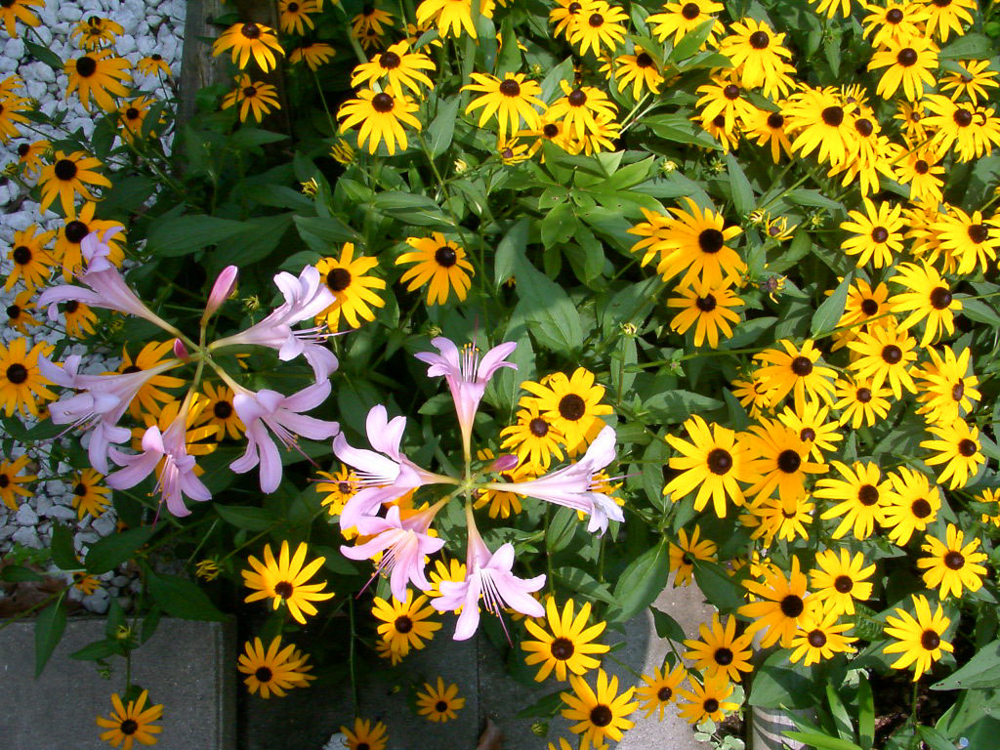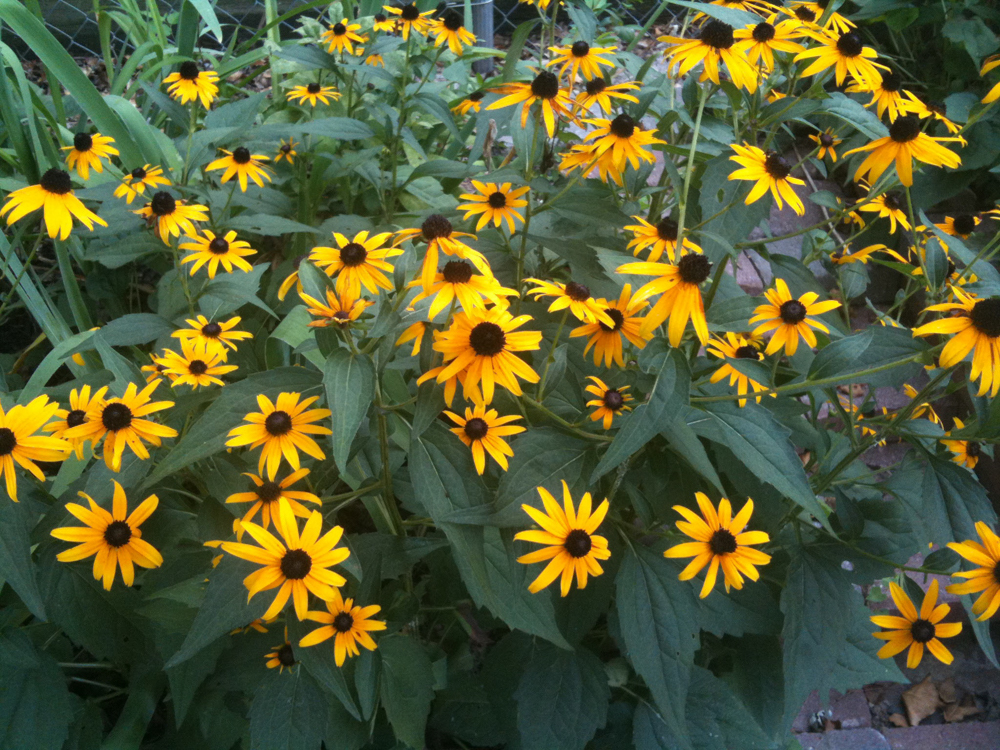My Corner Online
Redbeckia Hirta | Black-eyed Susan
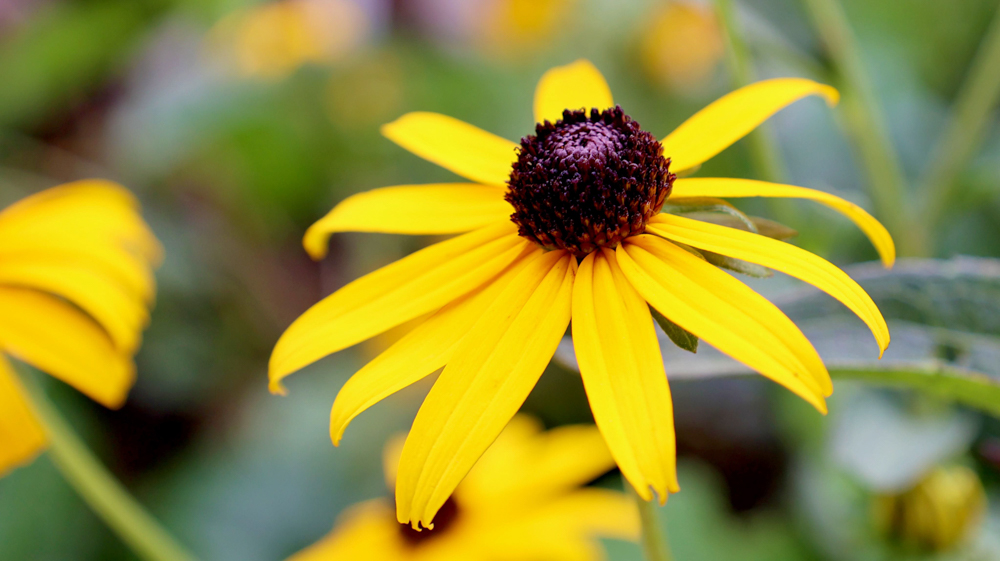
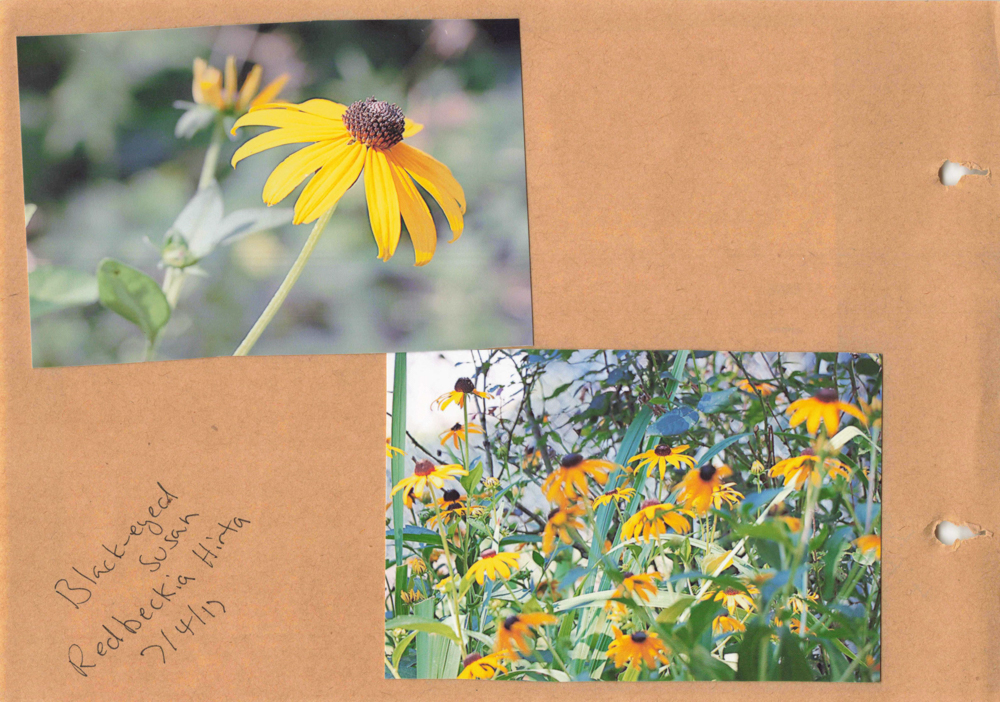
(Pronounced rood·beh·kee·uh) They were named by a legendary botanist Carl Linnaeus in 1753 after his mentor Olof Rudbeck.
(Pronounced her-ta) (meaning hairy, or rough and hairy)
The family is Asteraceae (Pronounced ass-ter-AY-see-eye ) which is daisies and sunflowers.
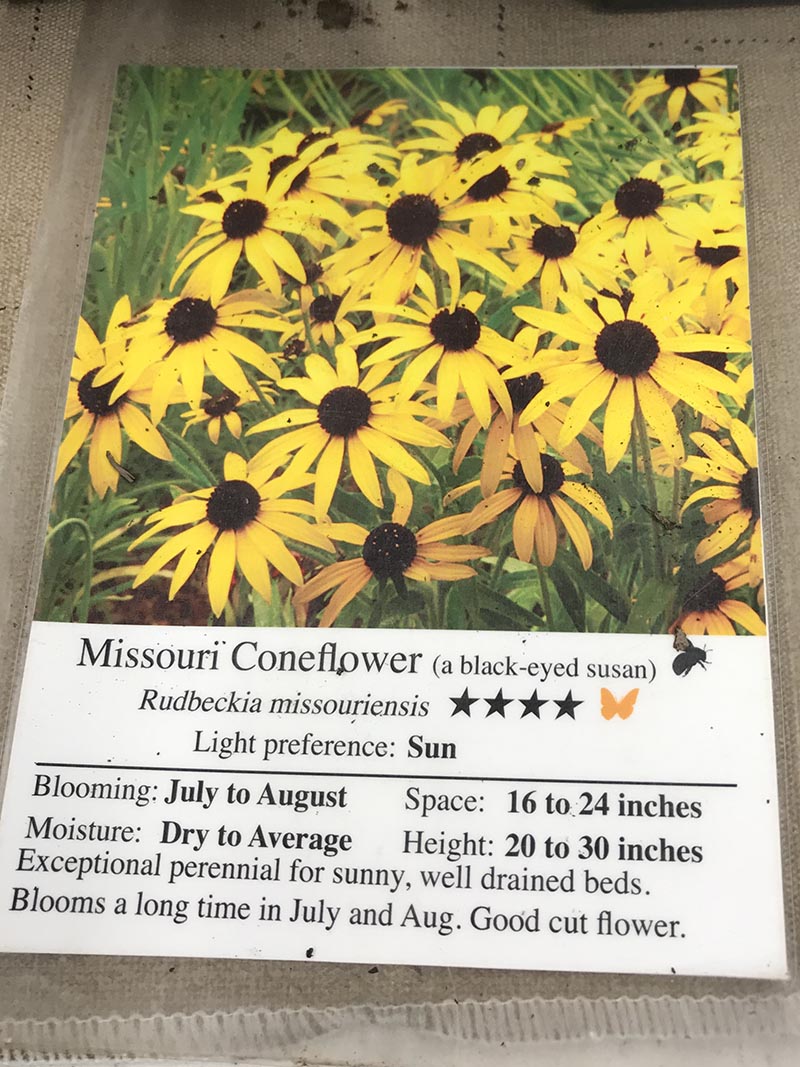
My first digital camera was in 2001 and I have photos of black-eyed Susans in that year, and most likely longer. In 2020 when I visited the Missouri Conservation plant sale locally, I snapped a photo of the Rudbeckia Missouriensis tag on the table wondering if I had purchased my Black-eyed Susan at the same sale many years earlier. I am not certain of the species of my Black-eyed Susan. The "Missouri Coneflower" species is a native perennial to Missouri.
A species is sometimes referred to as the specific epithet and the "Missouriensis" epthet means Missouri.
I found this comment online about the Missouriensis, "This perennial coneflower looks like a Black-Eyed Susan (Rudbeckia hirta) with skinny leaves (usually less than ½" across). It is one of the coneflowers with widely spreading rays that don't droop downward," and another comment, "like R. hirta but smaller; very hairy; with all but lowest leaves linear."
Both Hirta and Missouriensis are very hairy on the stems.
I like Black-eyed Susans a lot, but then again they are prolific spreaders and if I let them get away, they take over my entire garden bed. They have been called "invaders." There is a certain level of balance where the flower graces the gardens or the flower is so voluminous it looks too busy and cluttered for the eye. I do find that it is easy to curb back early in the Spring as I can recognize the leaves and pull any new plants that have gone where I do not want them to go. Keep them in check is easier than controlling weeds! The plant is easily divided and hearty.
The below (and one above) photos were taken in 2023 while filming the above video.
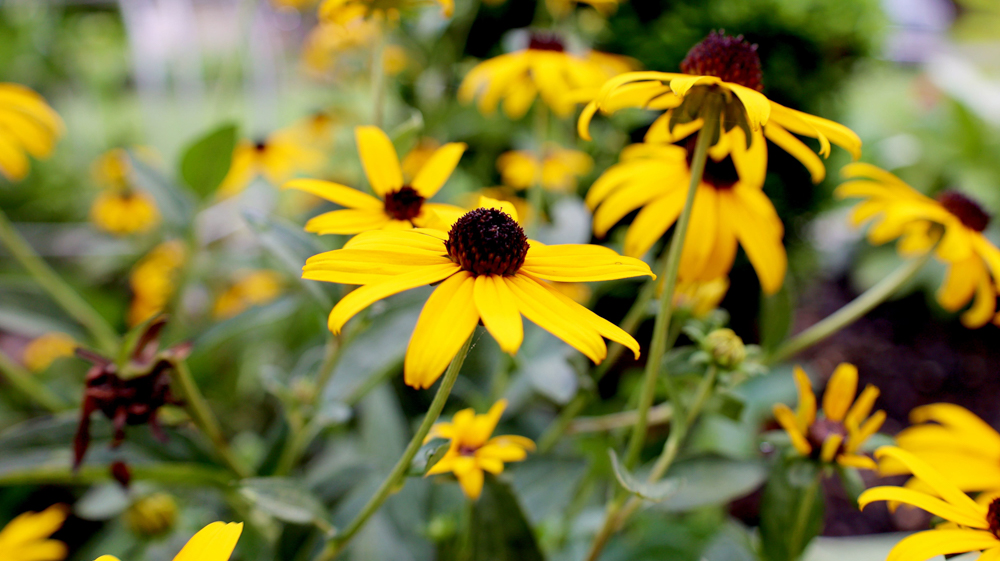
The below shows the size of the leaves and the buds coming out.
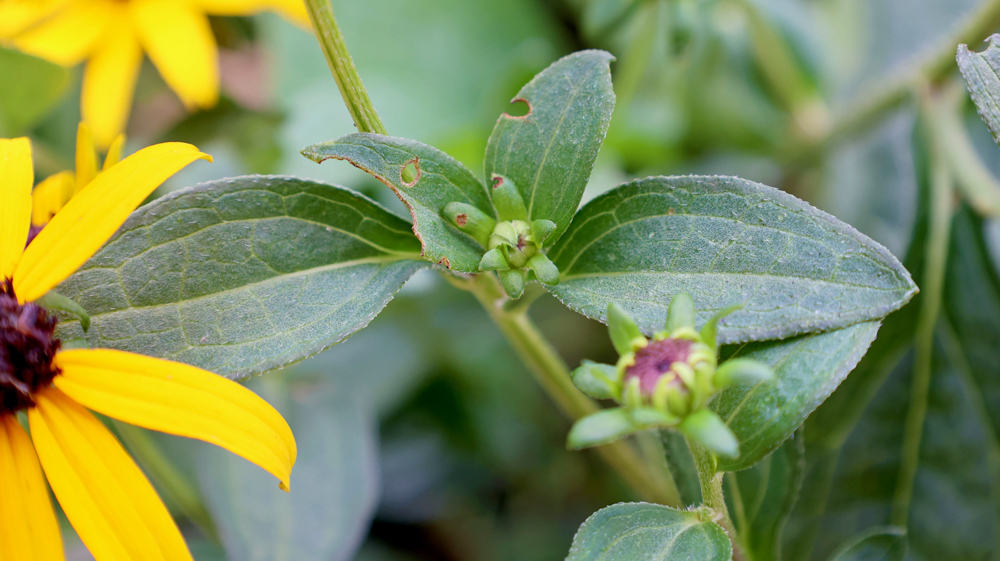
The below photos were taken in 2022. I do love my re-purposed bird bath so much! It's so lovely with the flowers too. The birds absolutely love it.
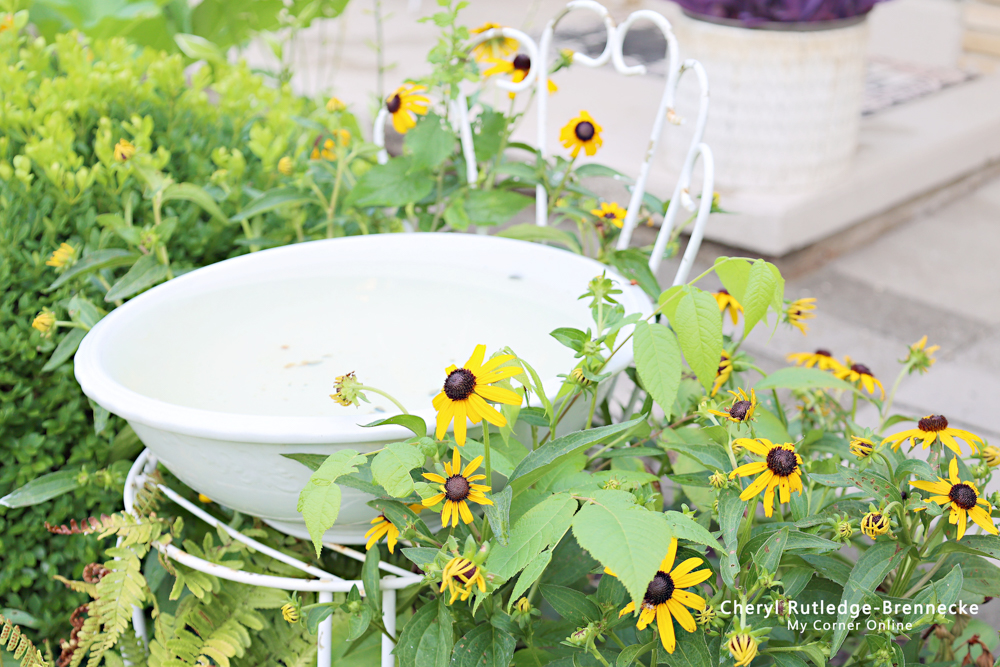
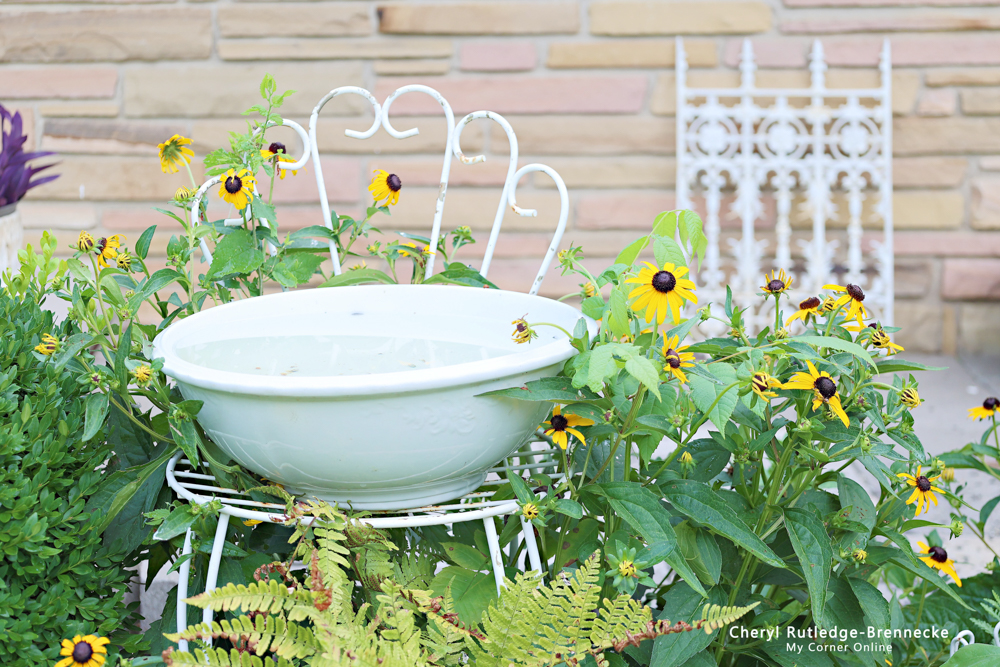
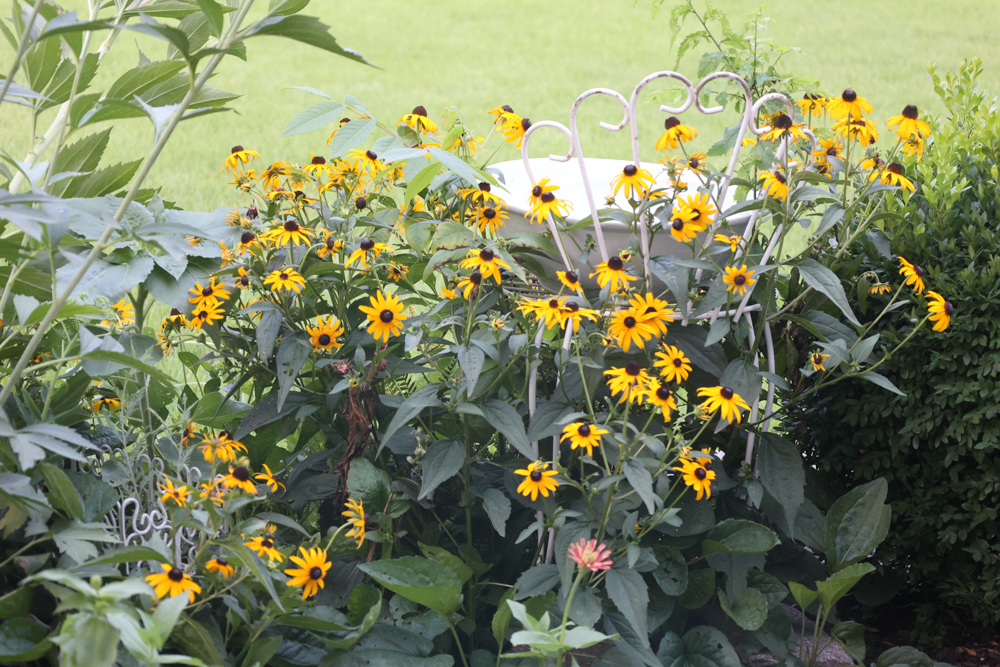
The below photos were taken in 2021.
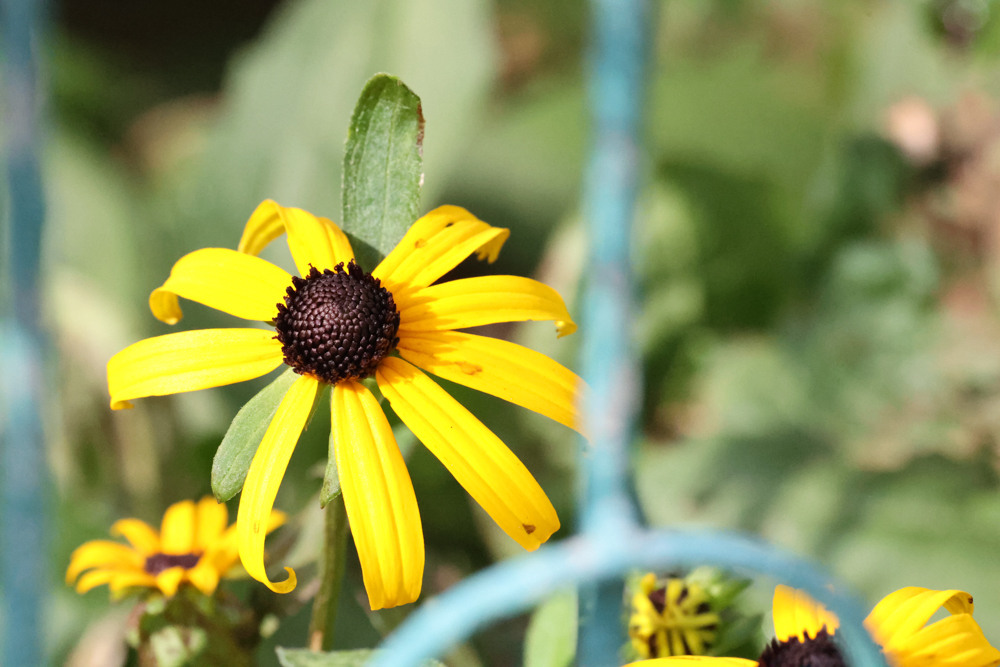
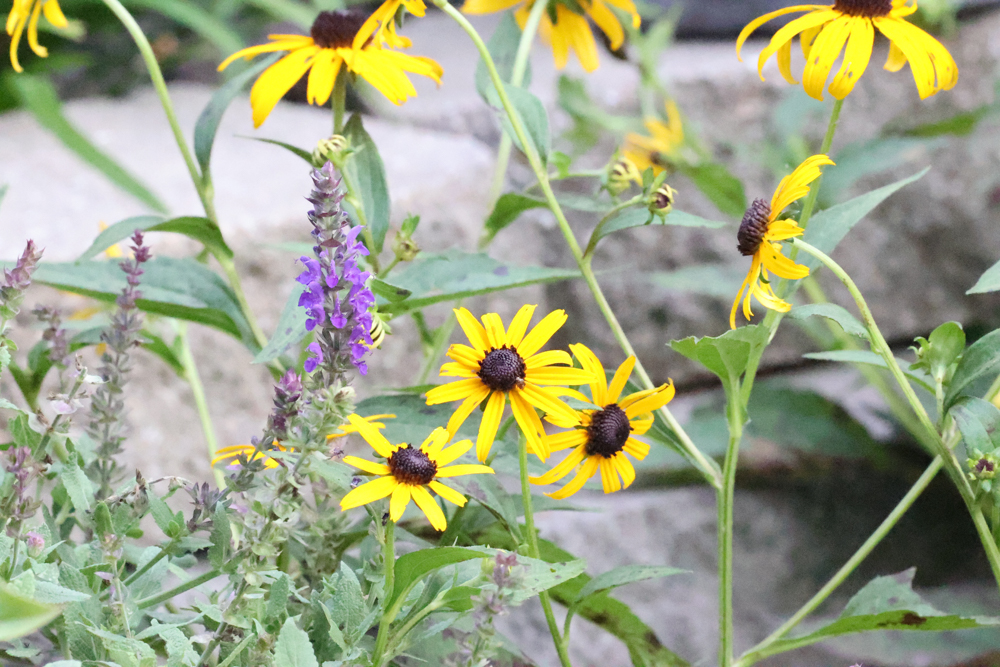
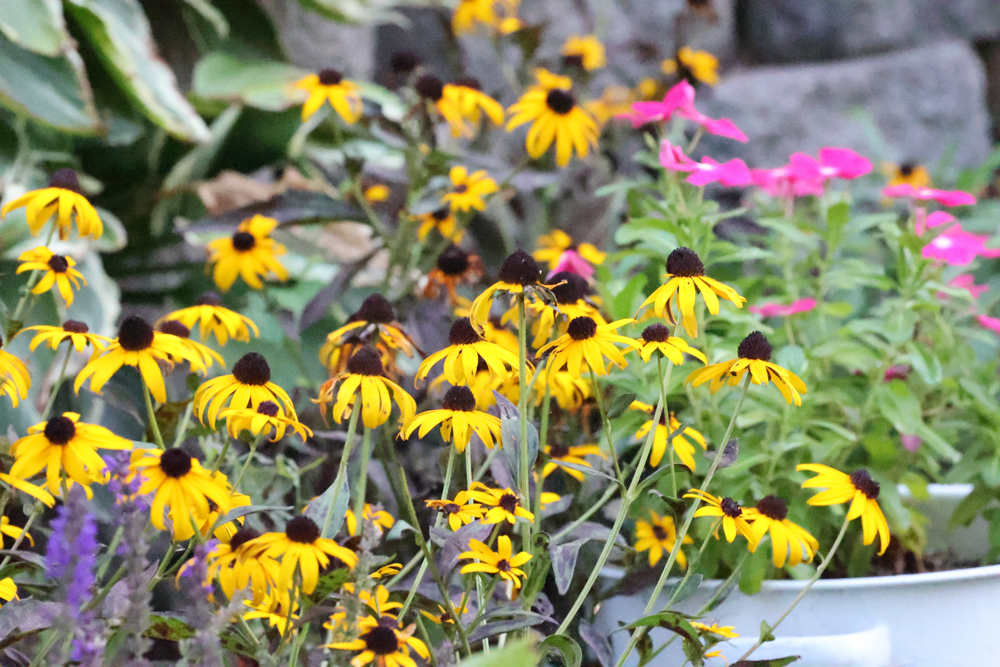
The below photos were taken in 2020.
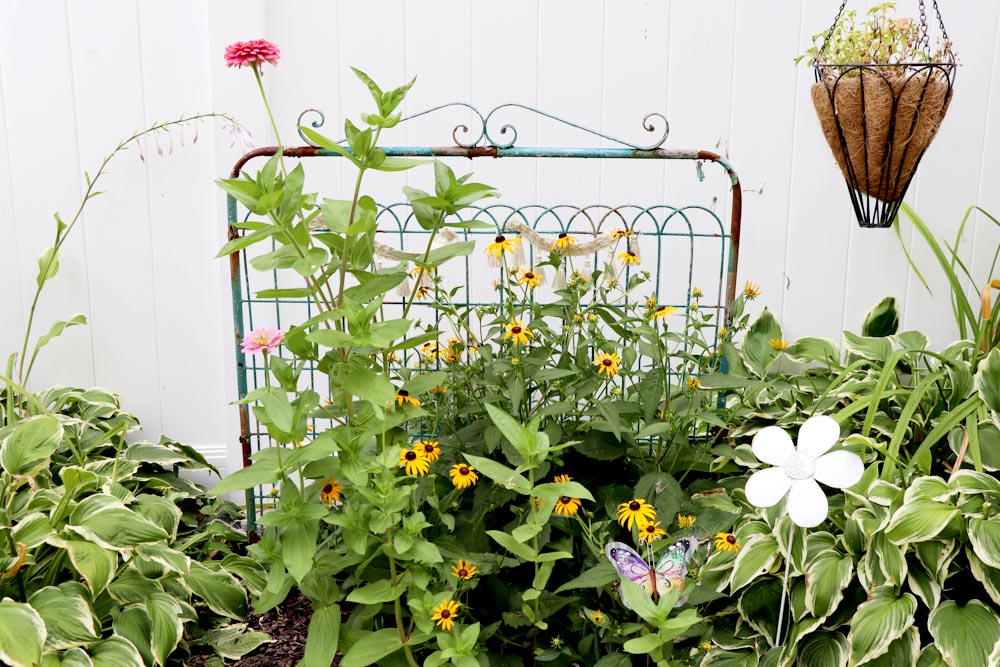
I move things around so much! I no longer have black-eyed Susans in this bed, but I did love them in front of my antique garden gate. Both hostas have not been removed as of 2023 to give me creative space to play.
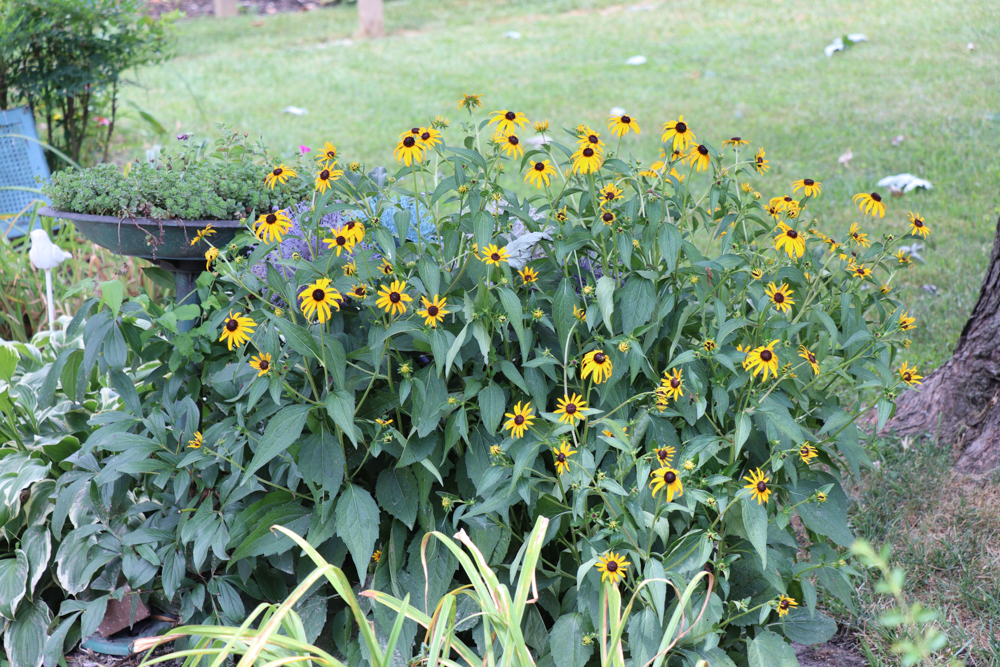
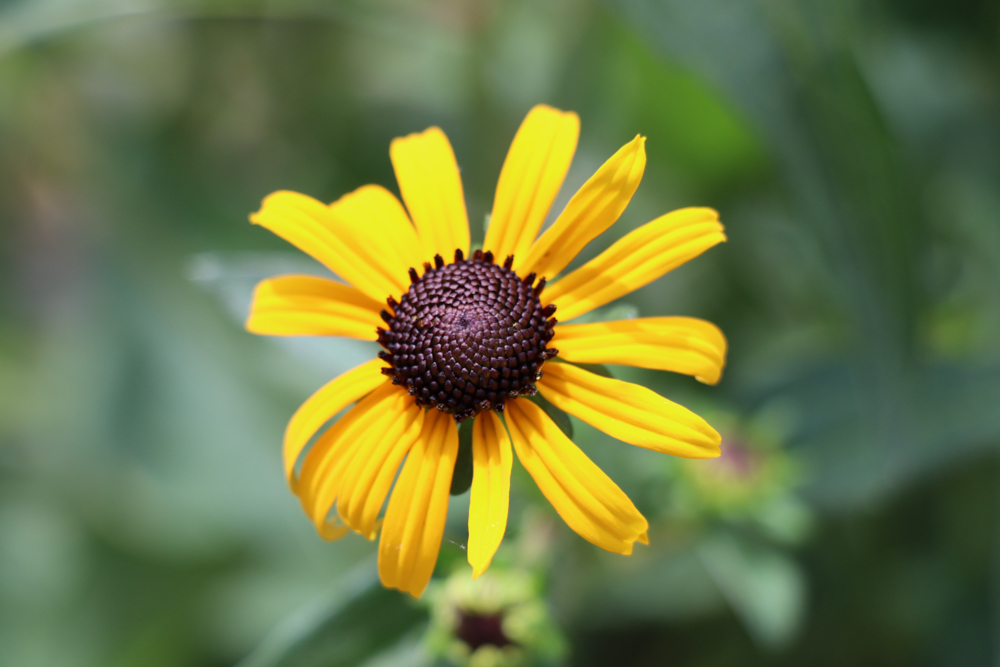
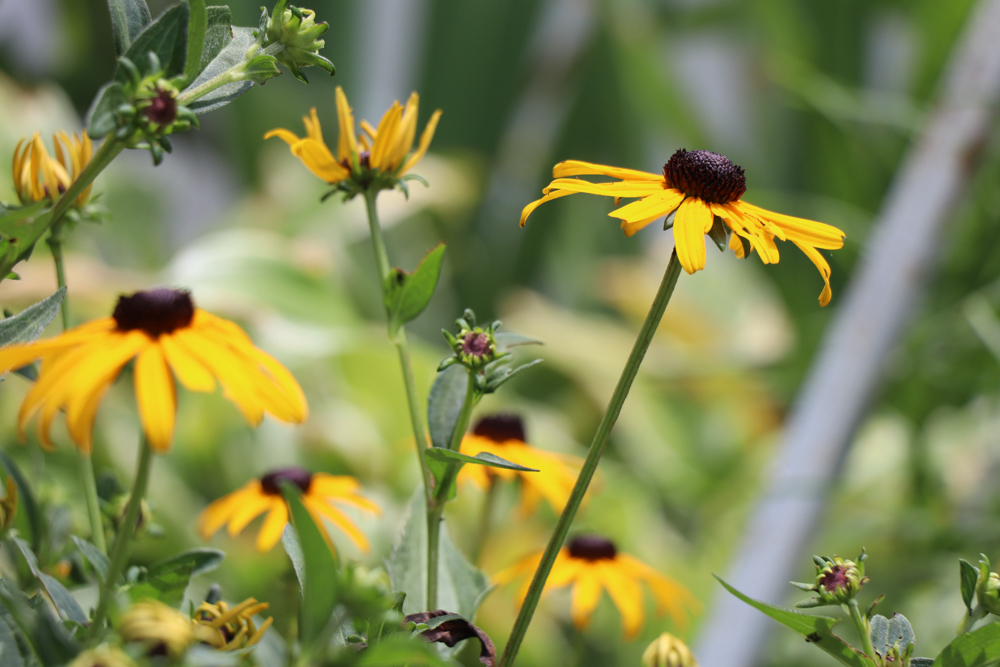
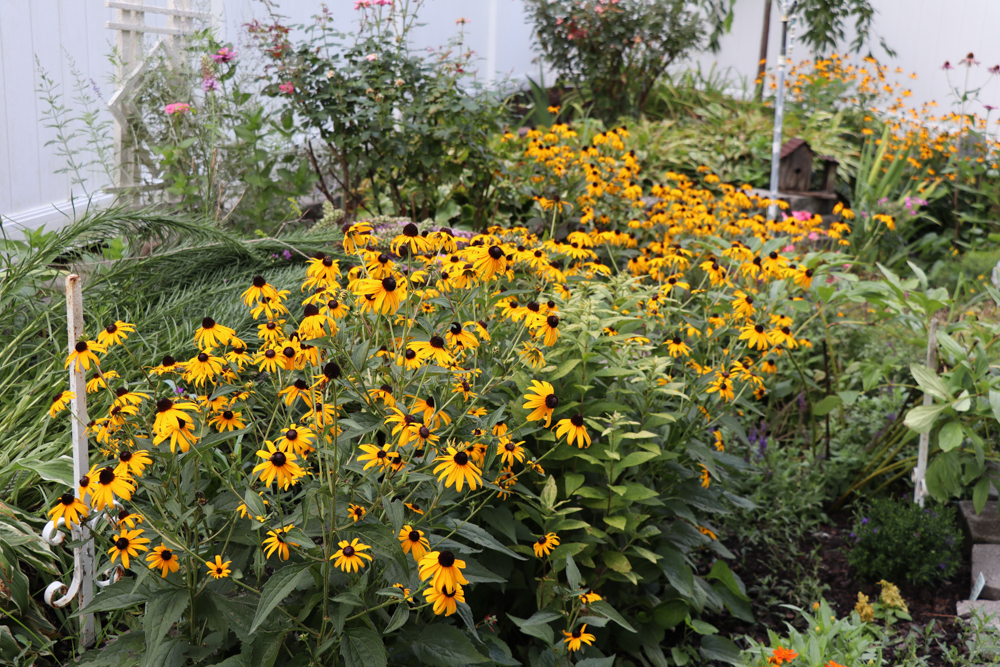
This is almost too many! It looks so cluttered, and this is after I probably throw away bags of them earlier in the Spring
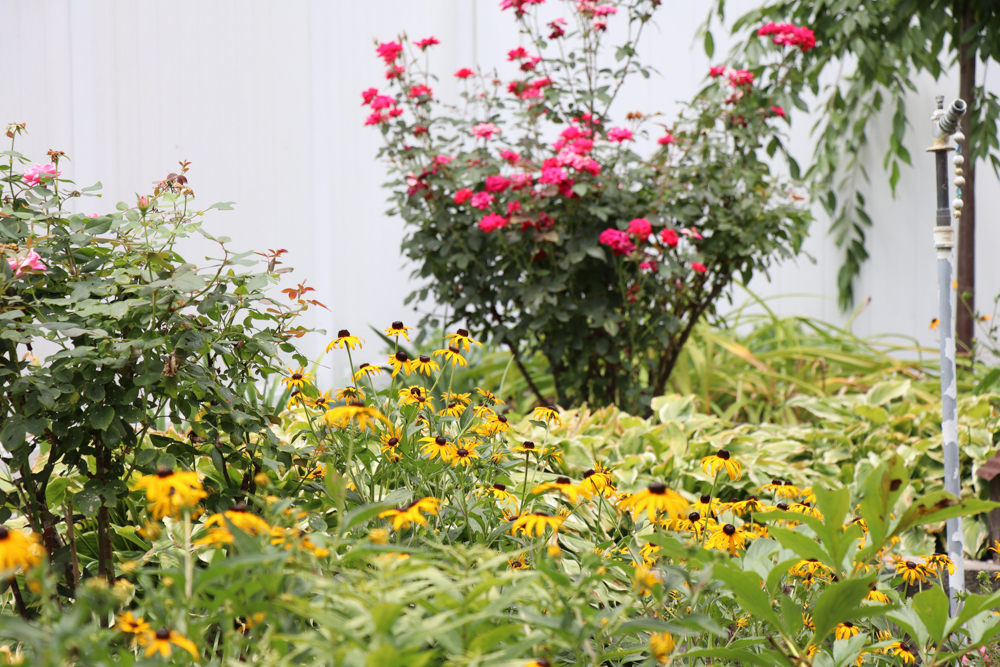
I think they looked pretty gracing the base of my dark pink knockout rose.
The below photos were taken in 2019.
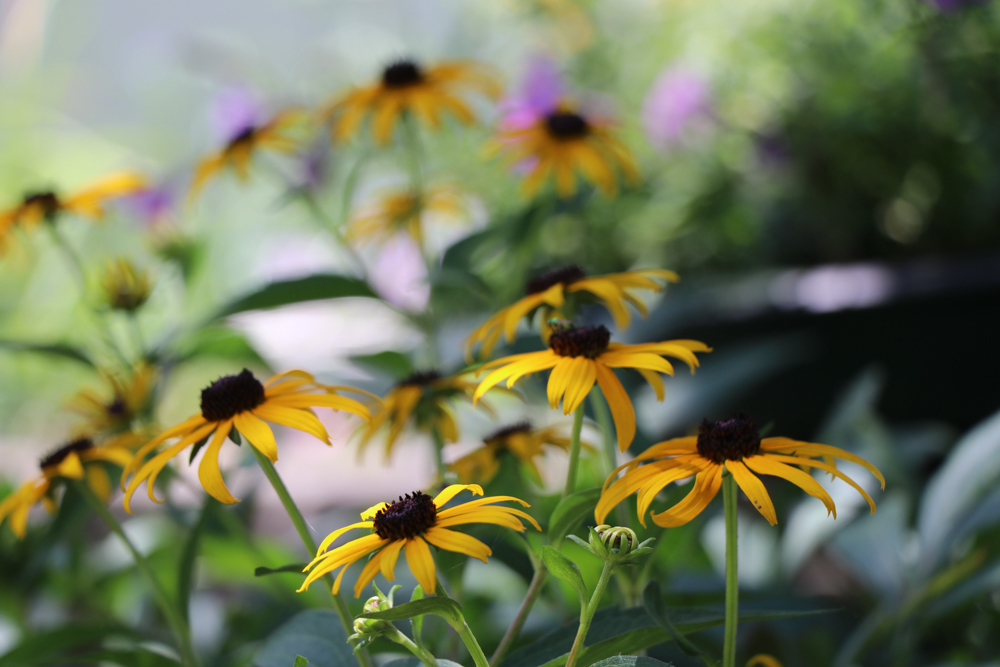
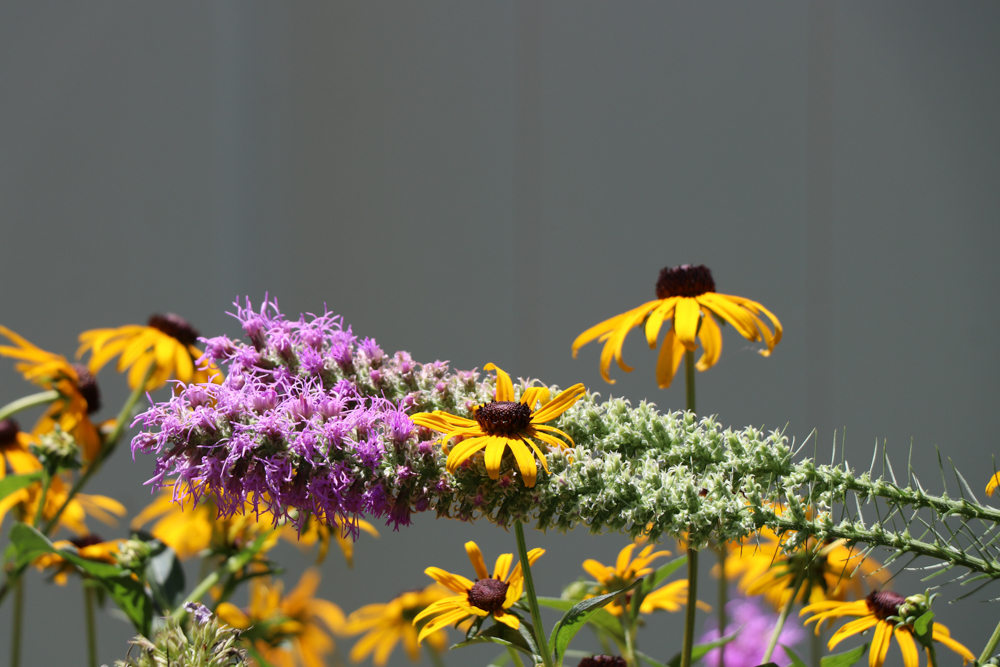
My Liatris pycnostachya | Prairie Blazing Star Liatris | Kansas Gayfeather fell over on some to create this scene.
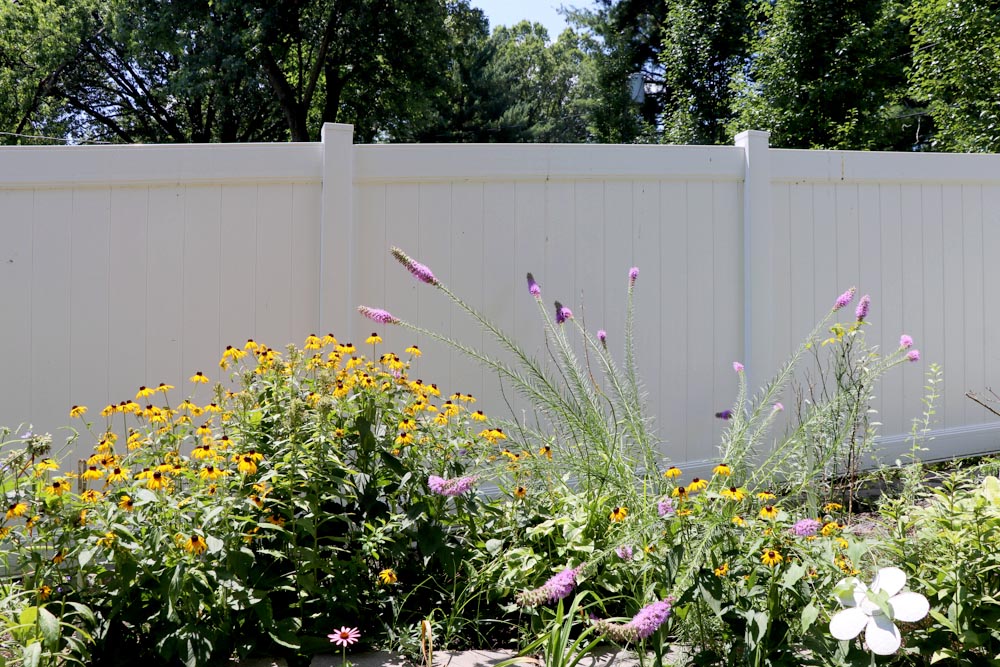
This is one of the rare years the Liatris pycnostachya | Prairie Blazing Star Liatris | Kansas Gayfeather stood up on its own and didn't look too bad.
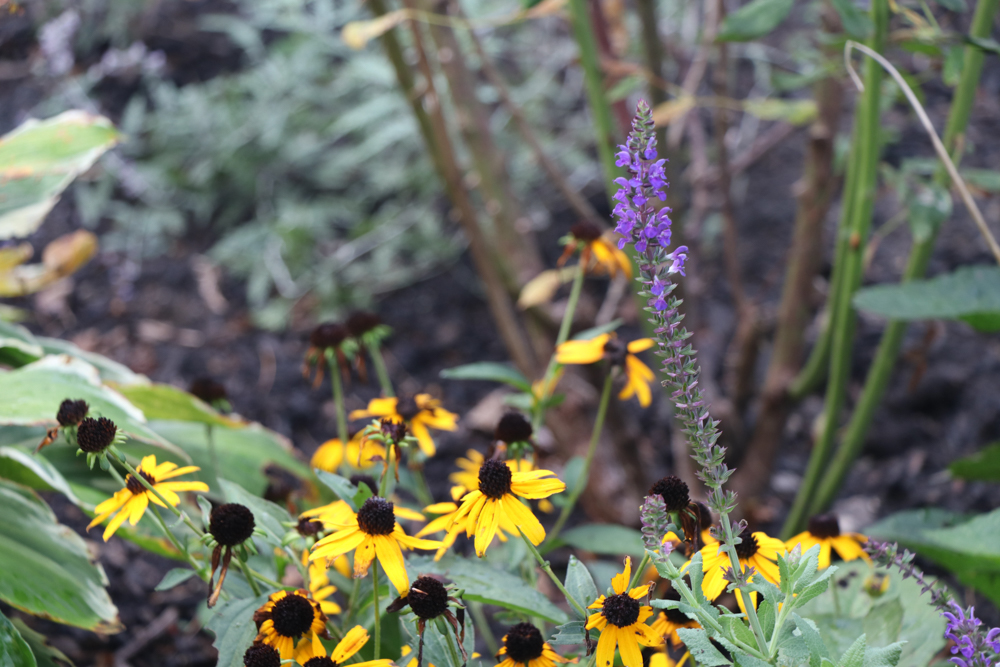
The below photos were taken in 2018.
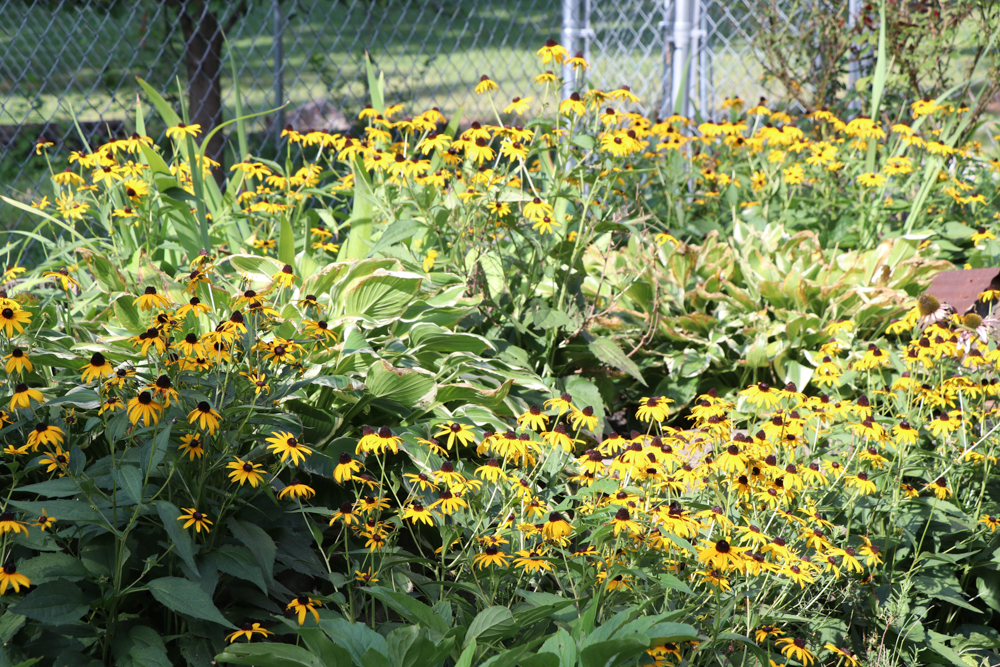
Now THIS is too many! It is not pretty to me at all.
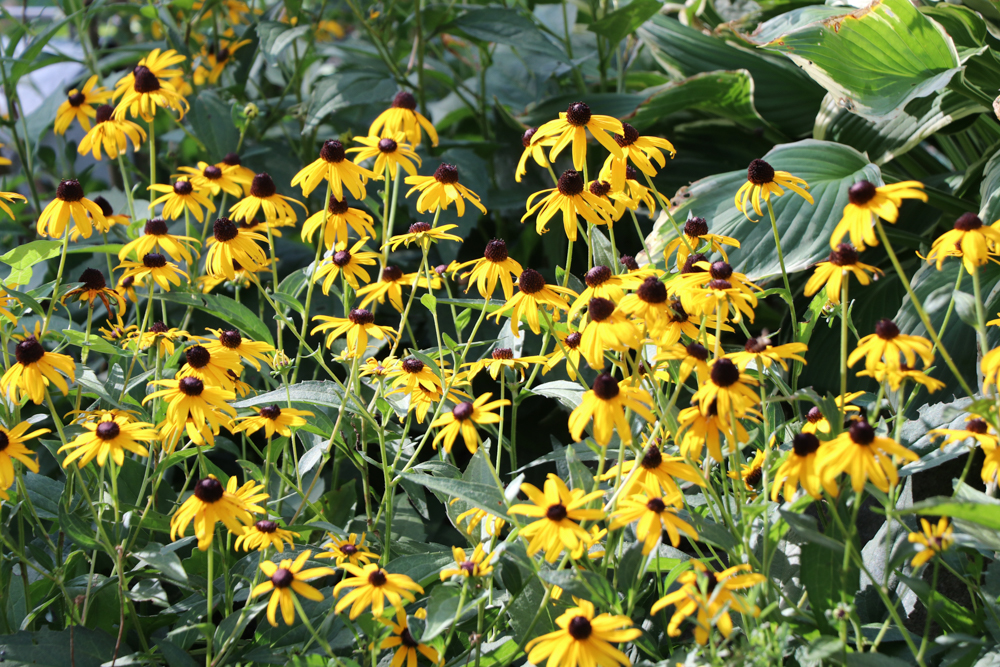
The below photos were taken in 2017.
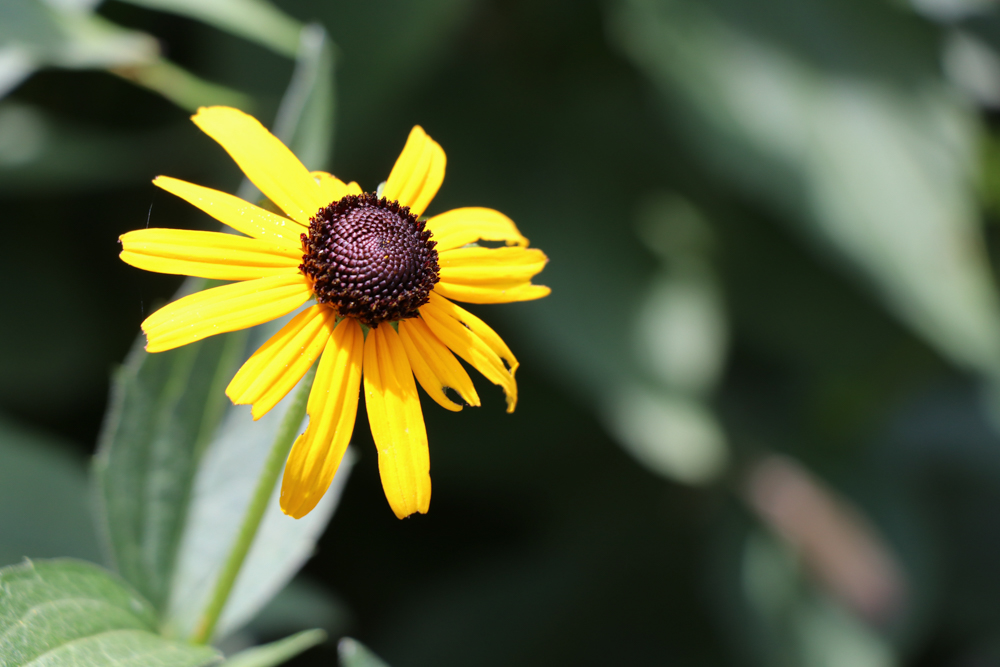
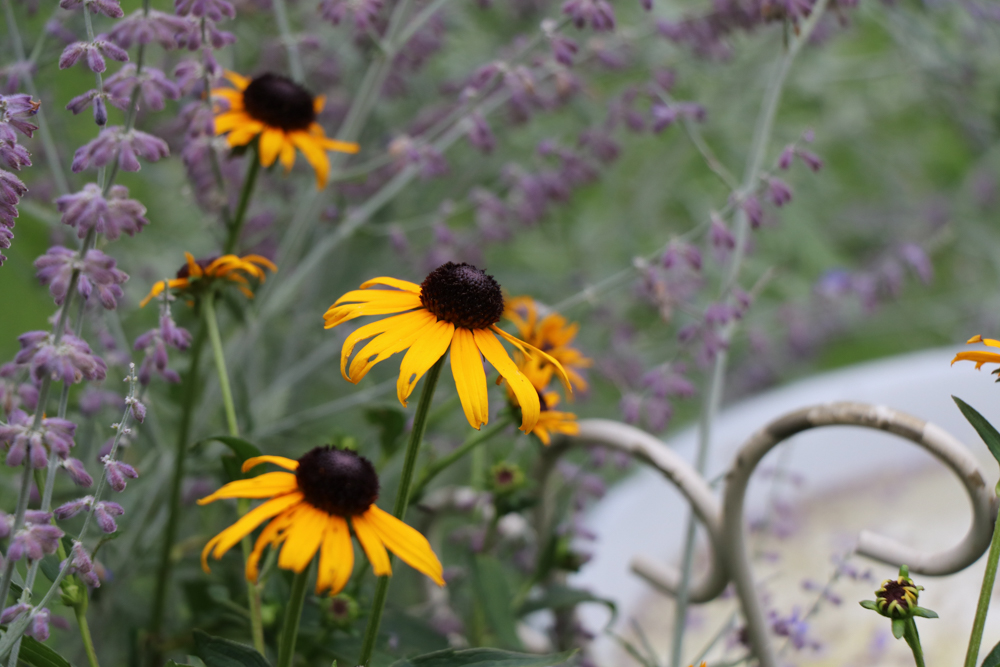
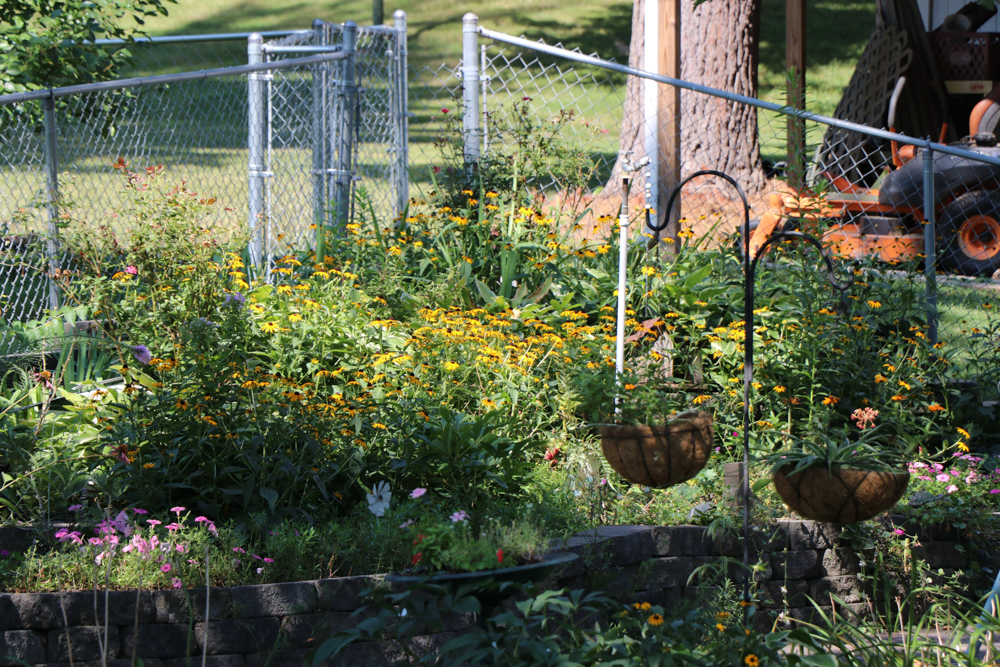
Oh my! Seriously too many Black-eyed Susans!
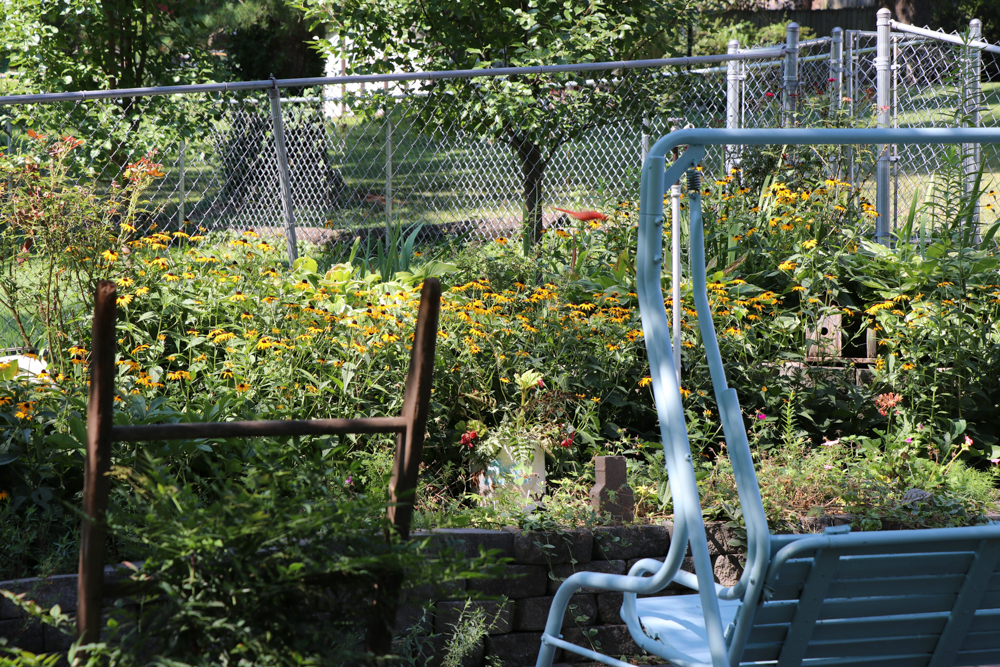
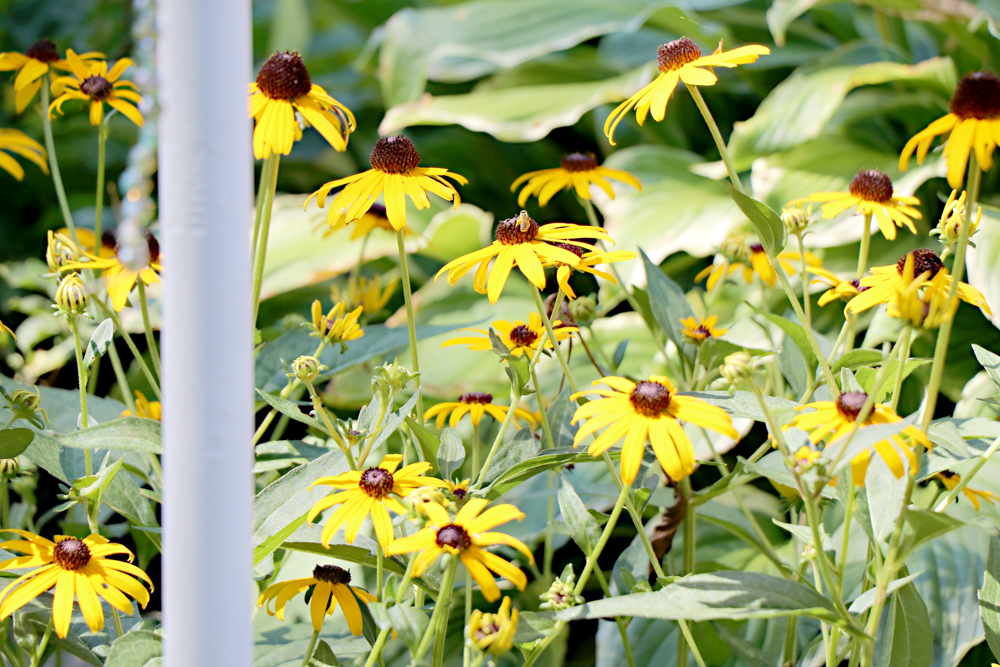
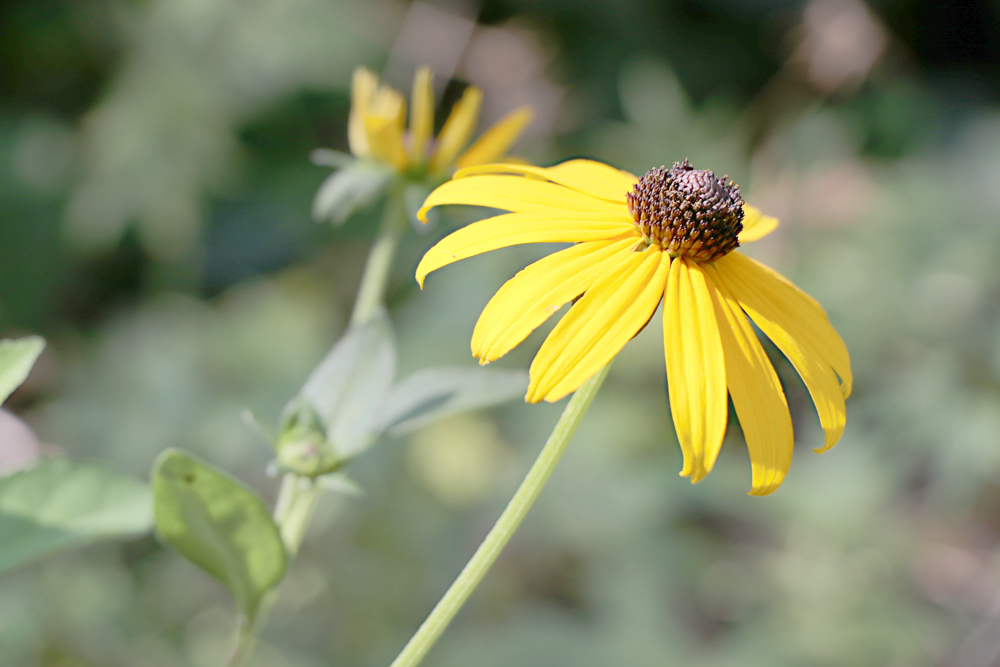
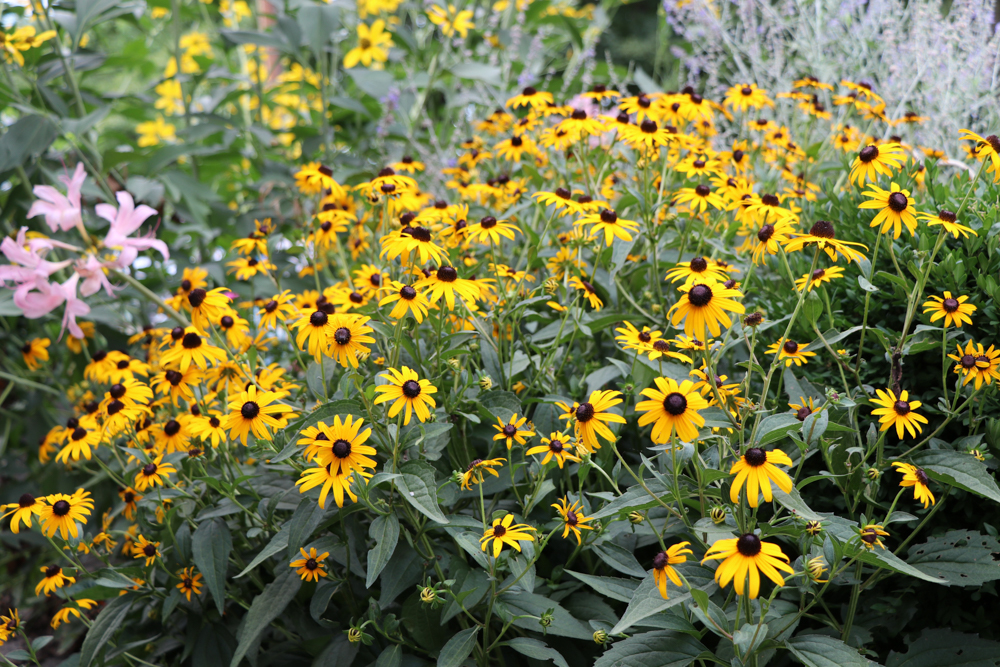
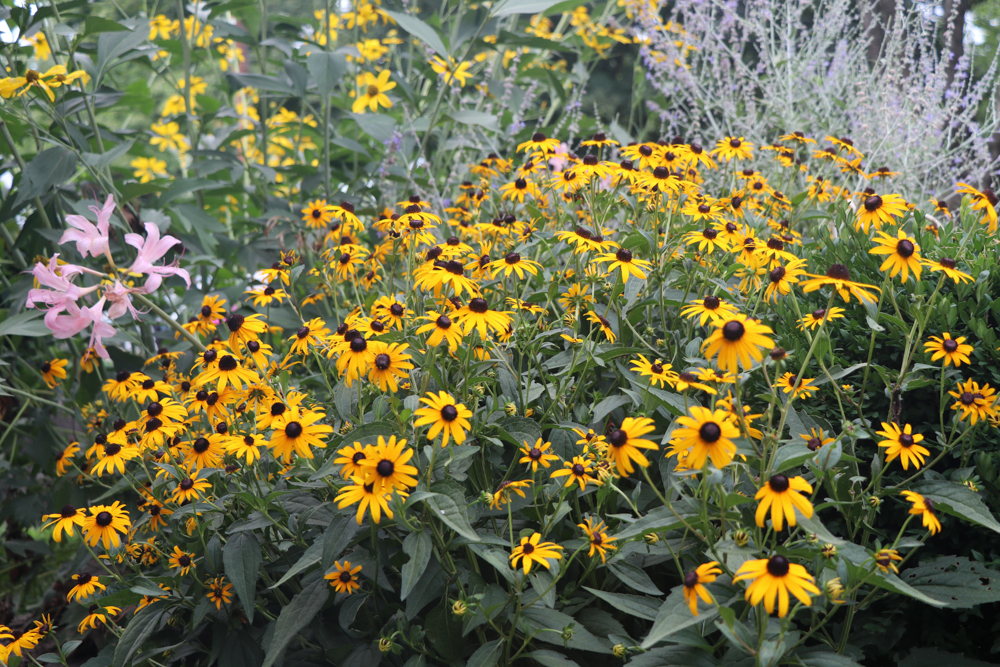
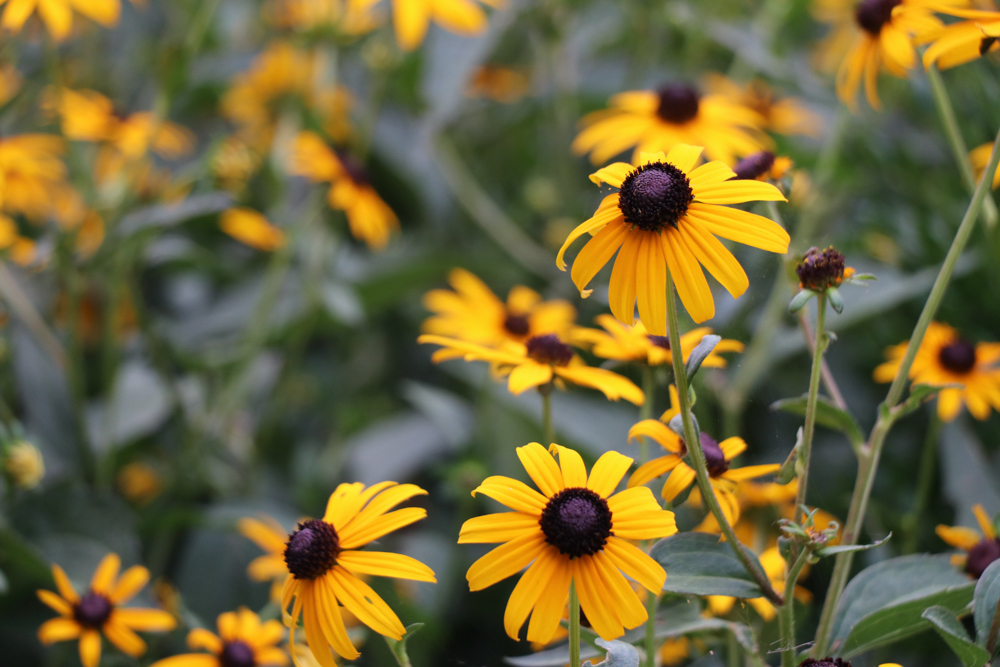
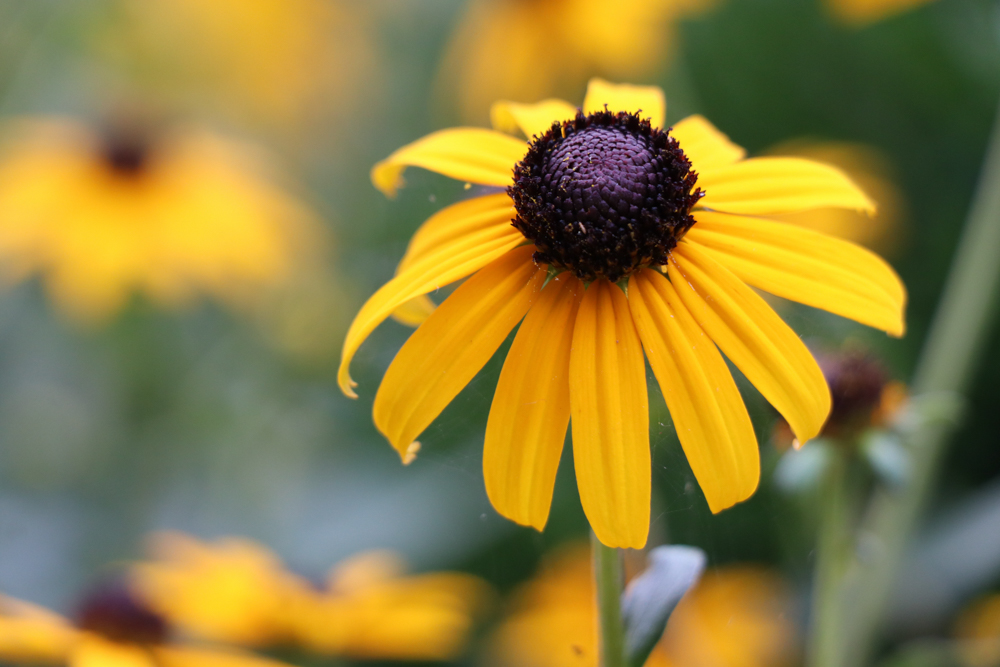
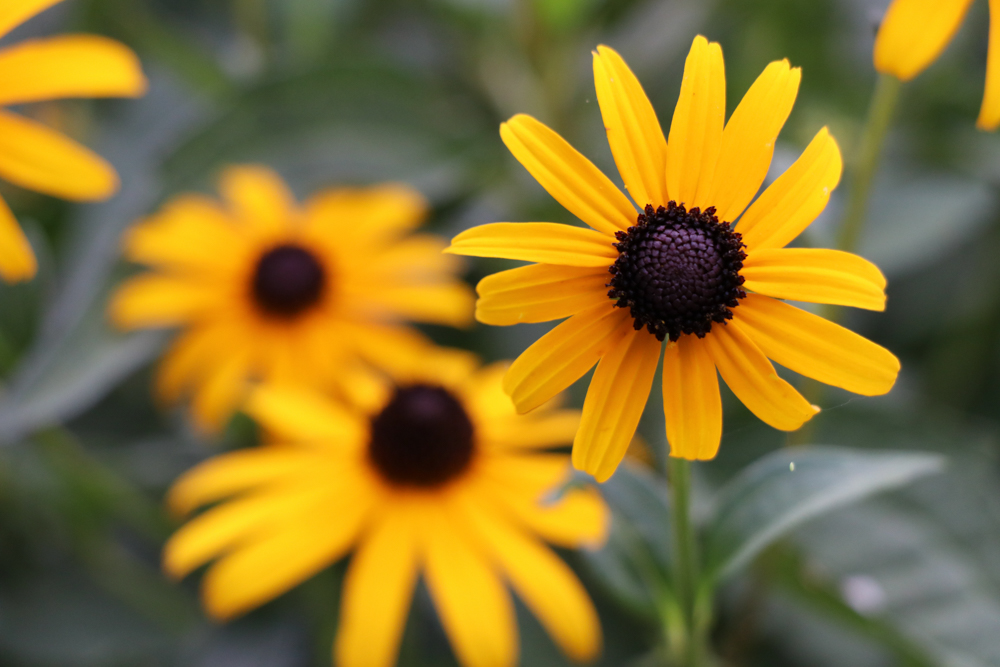
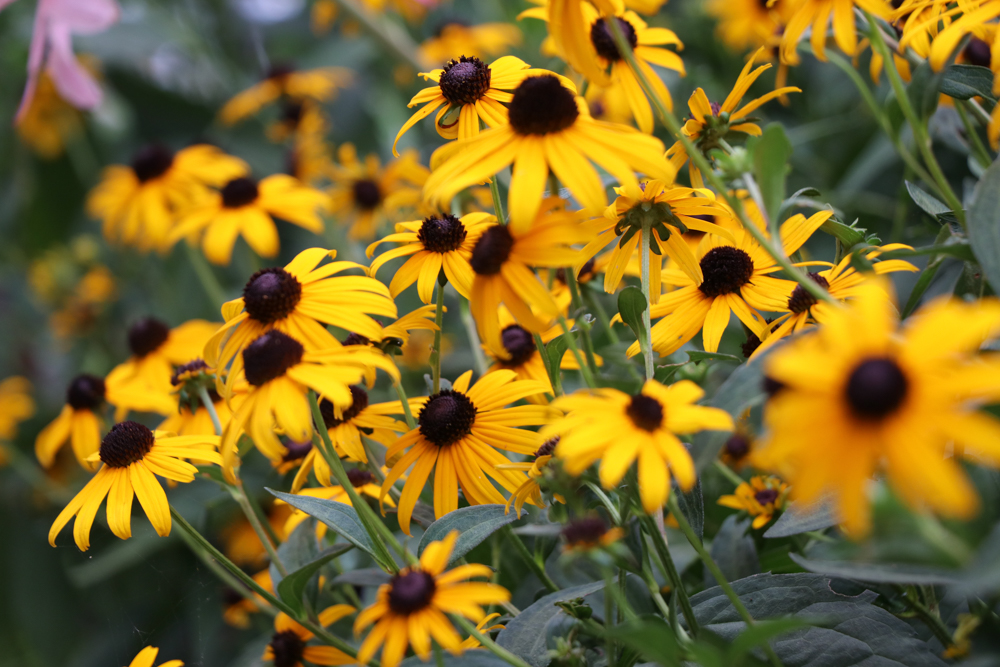
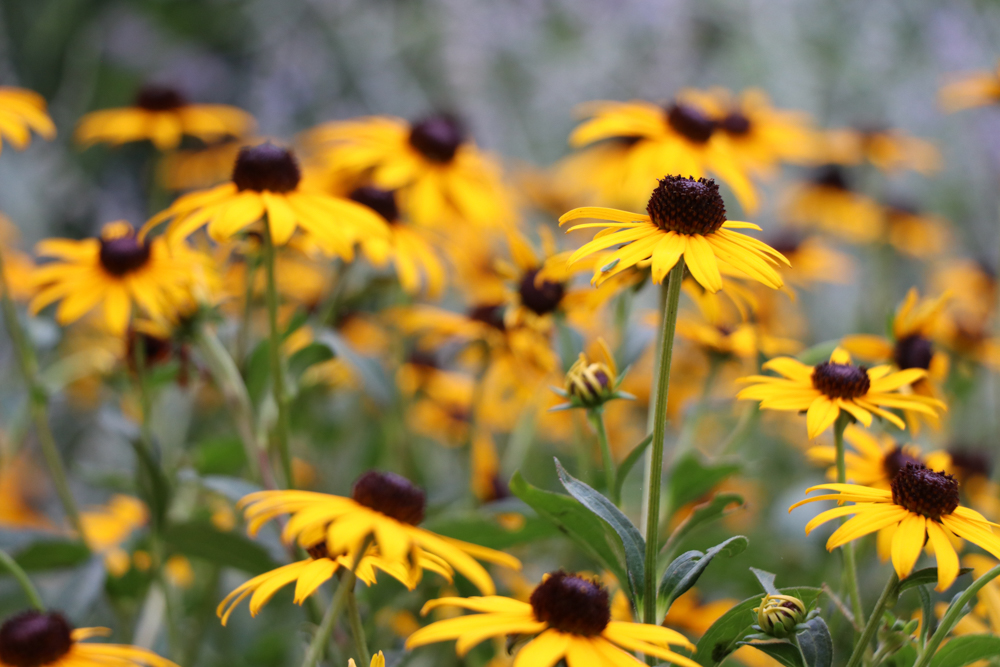
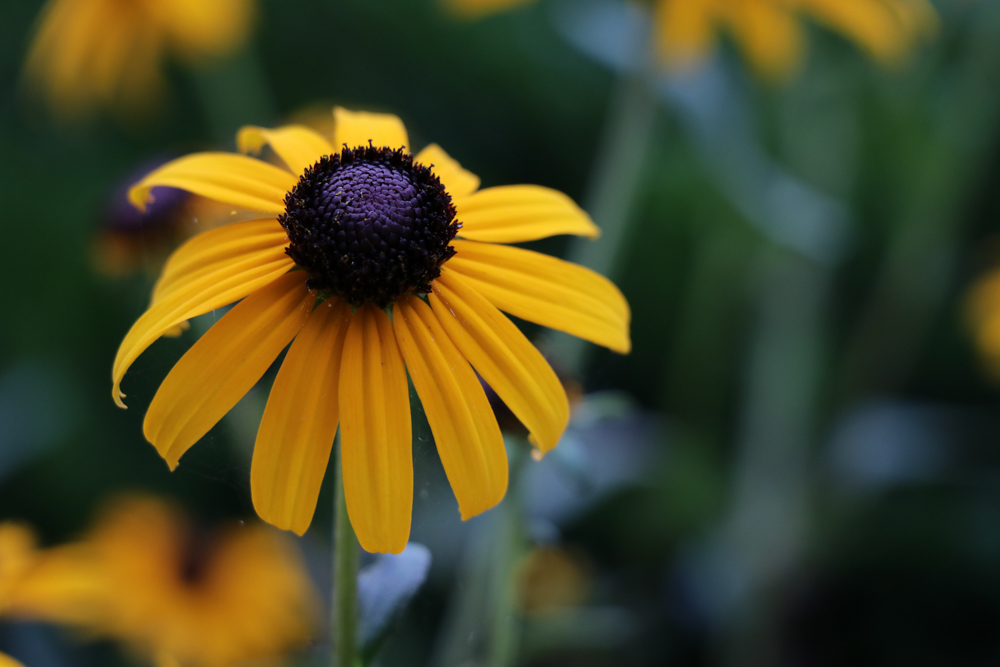
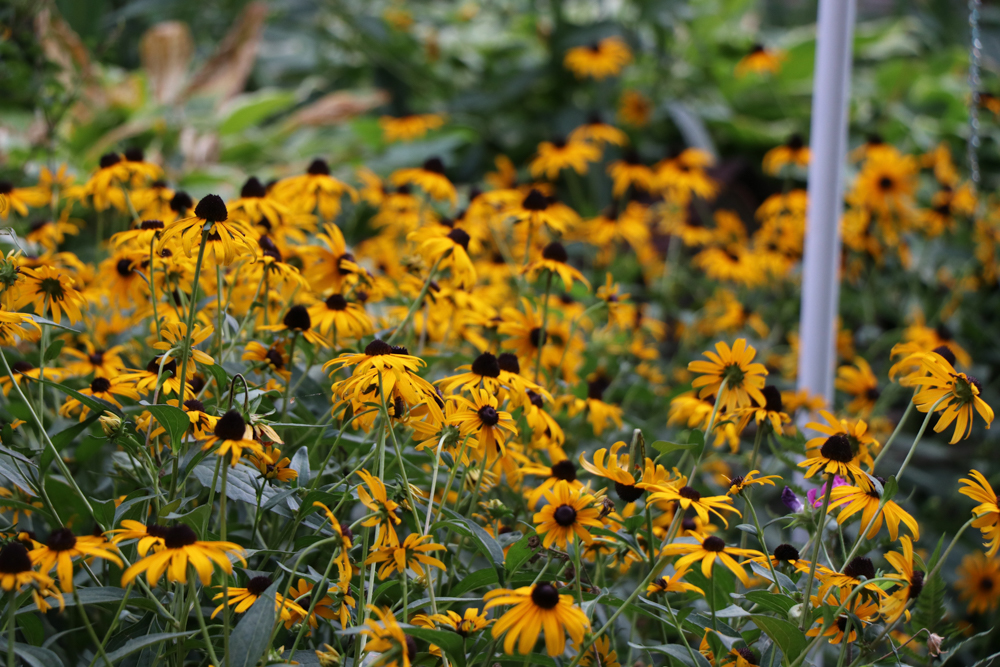
The below photos were taken in 2016.
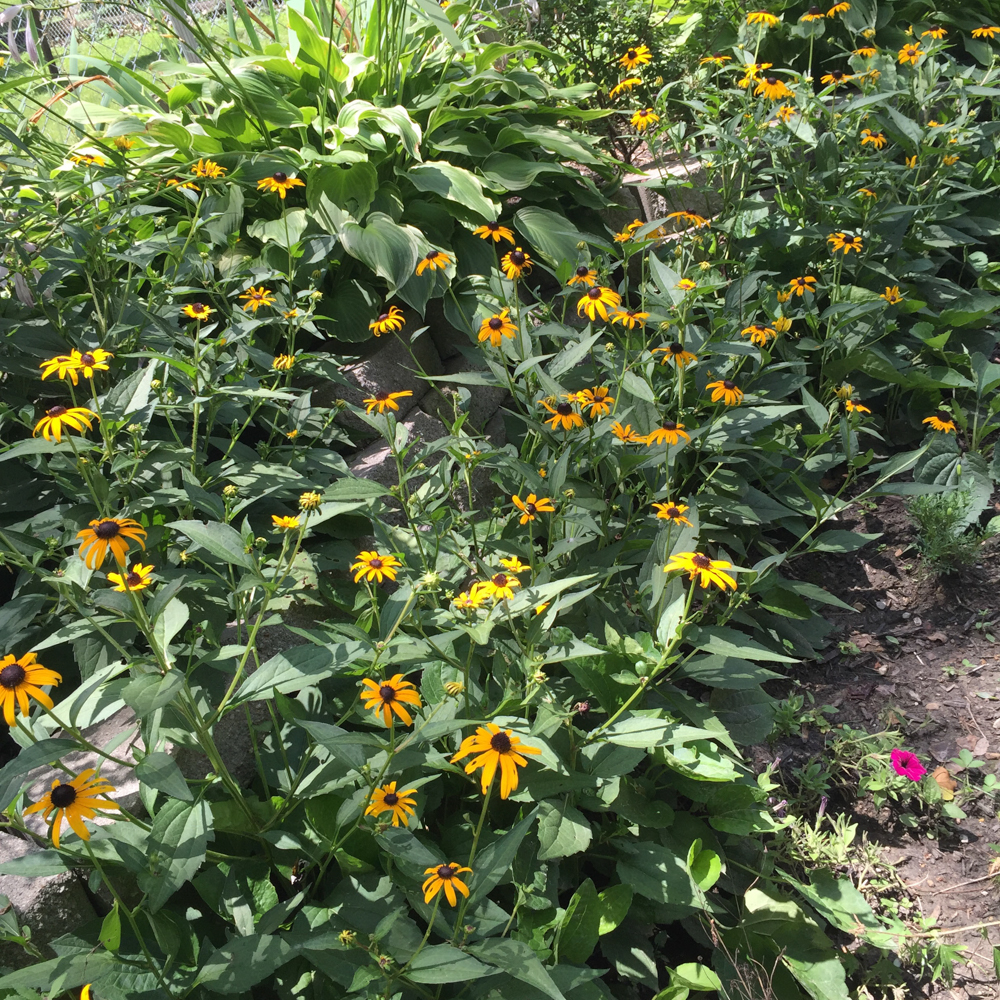
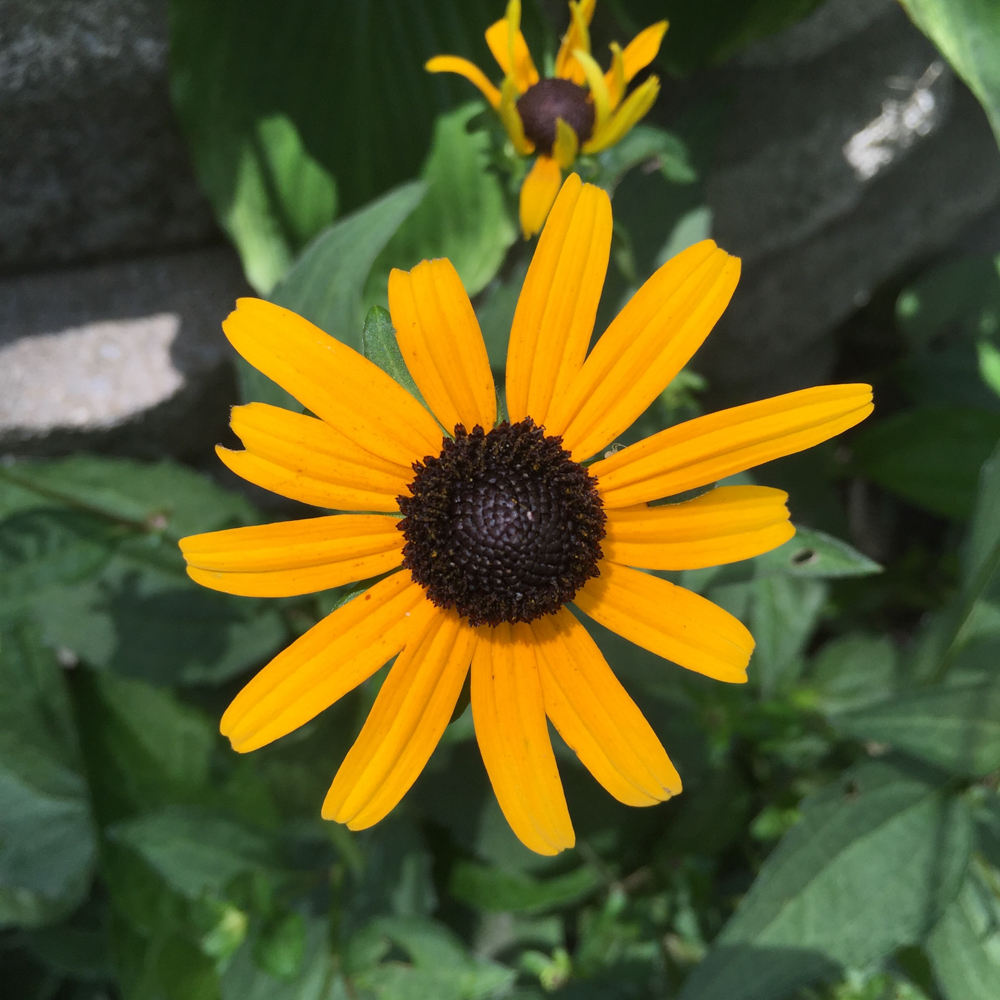
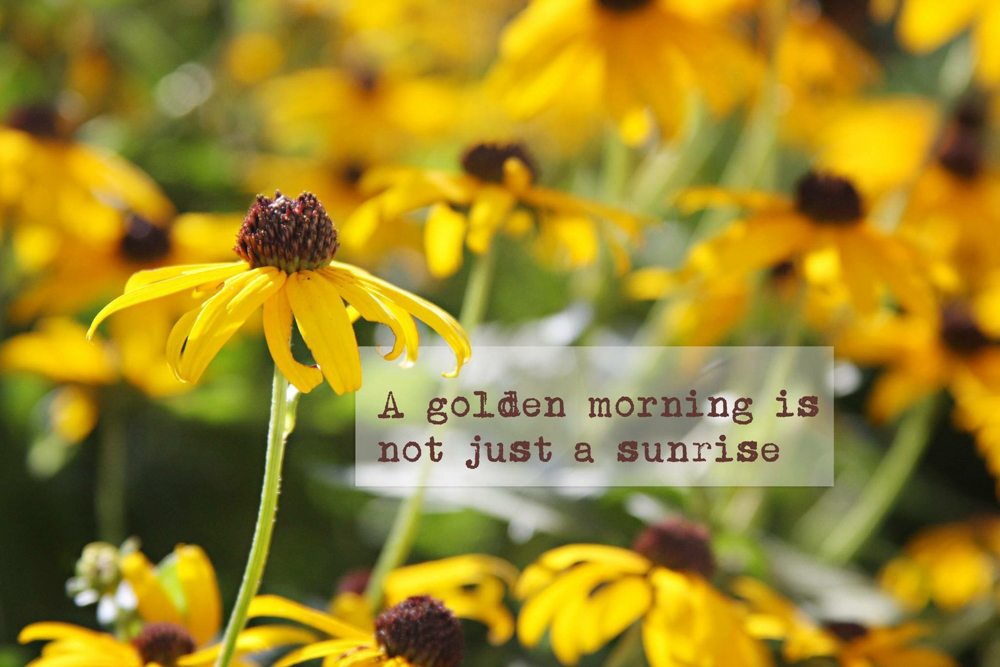
I love this simple graphic I made with the flower photo and I'm sure it is somewhere else on the website.
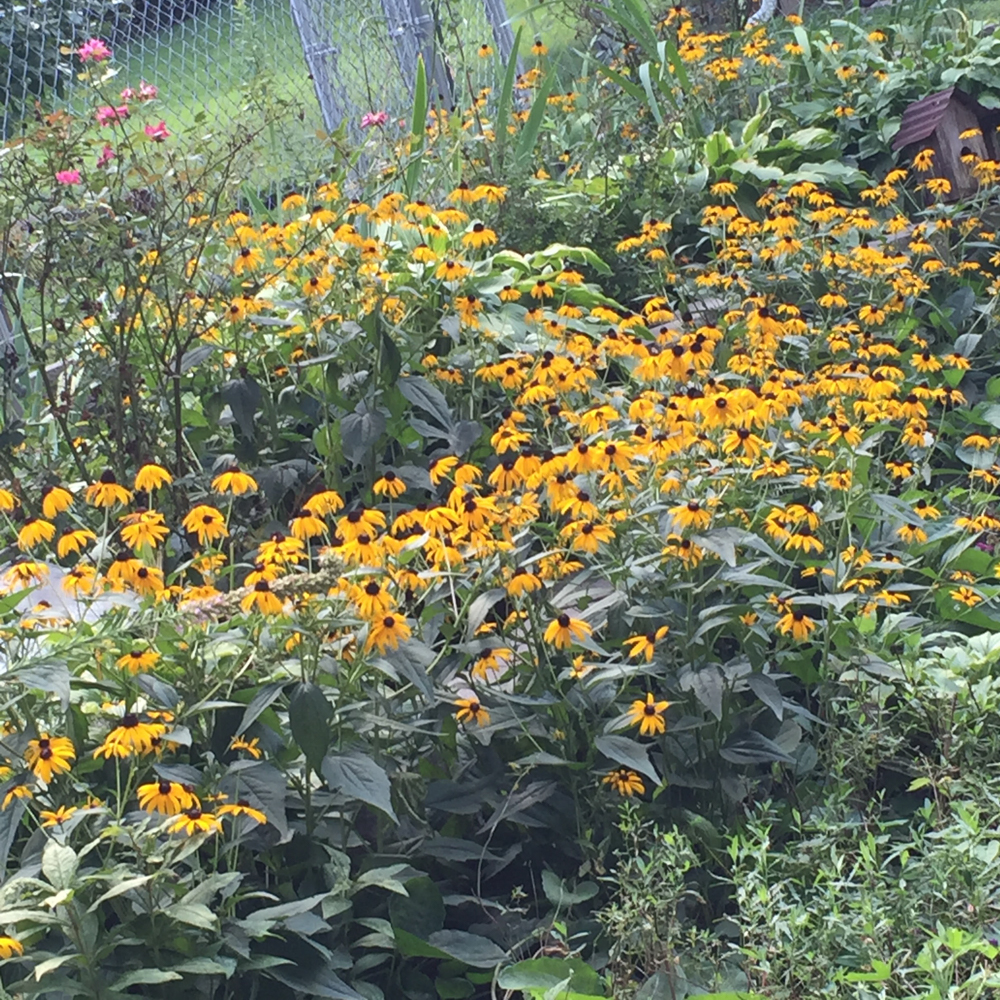
Once again, this is TOO MANY and they do not look pleasing to my eye.
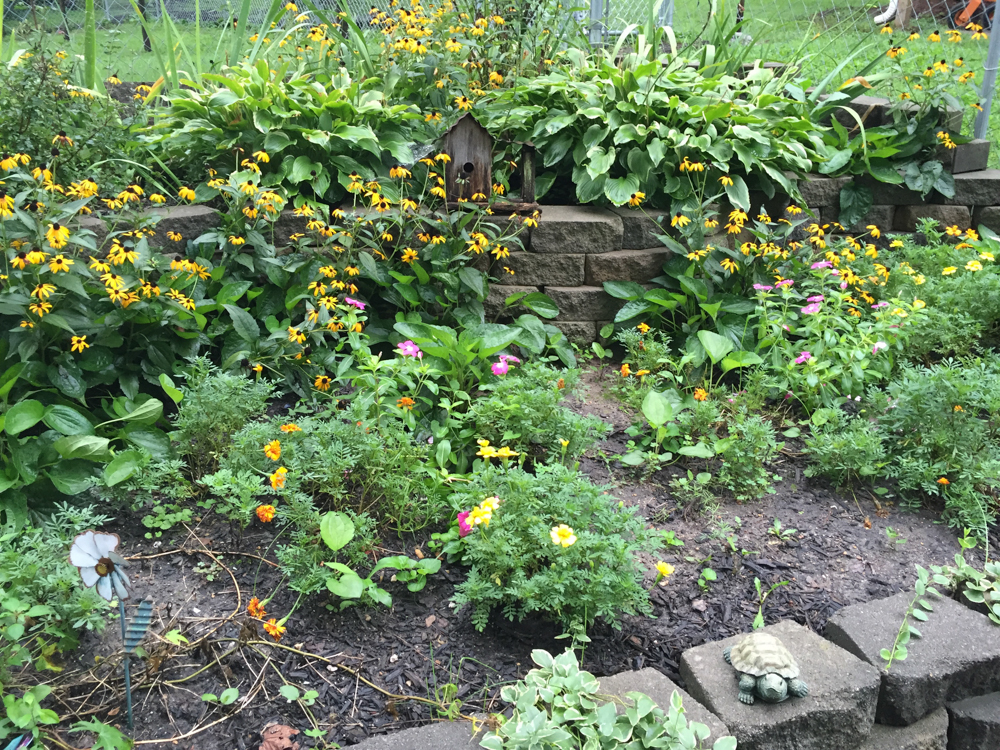
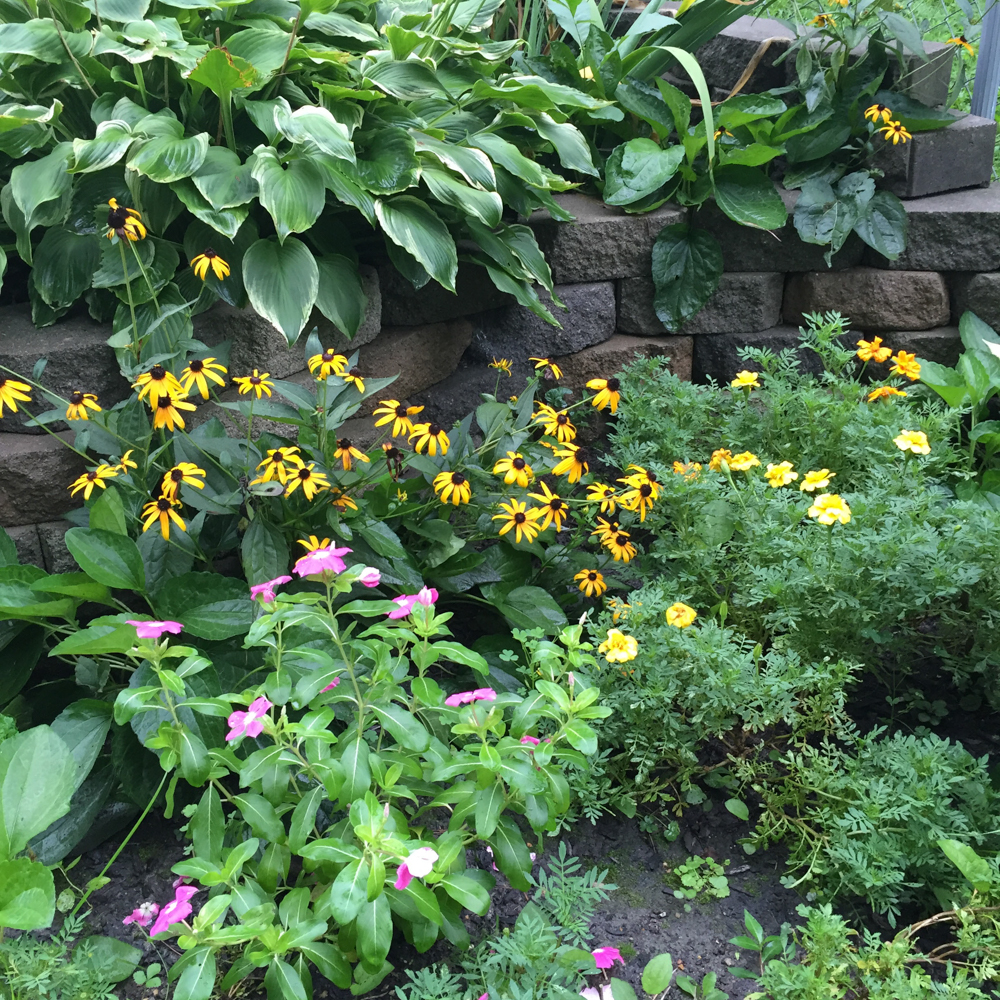
The below photos were taken in 2015.
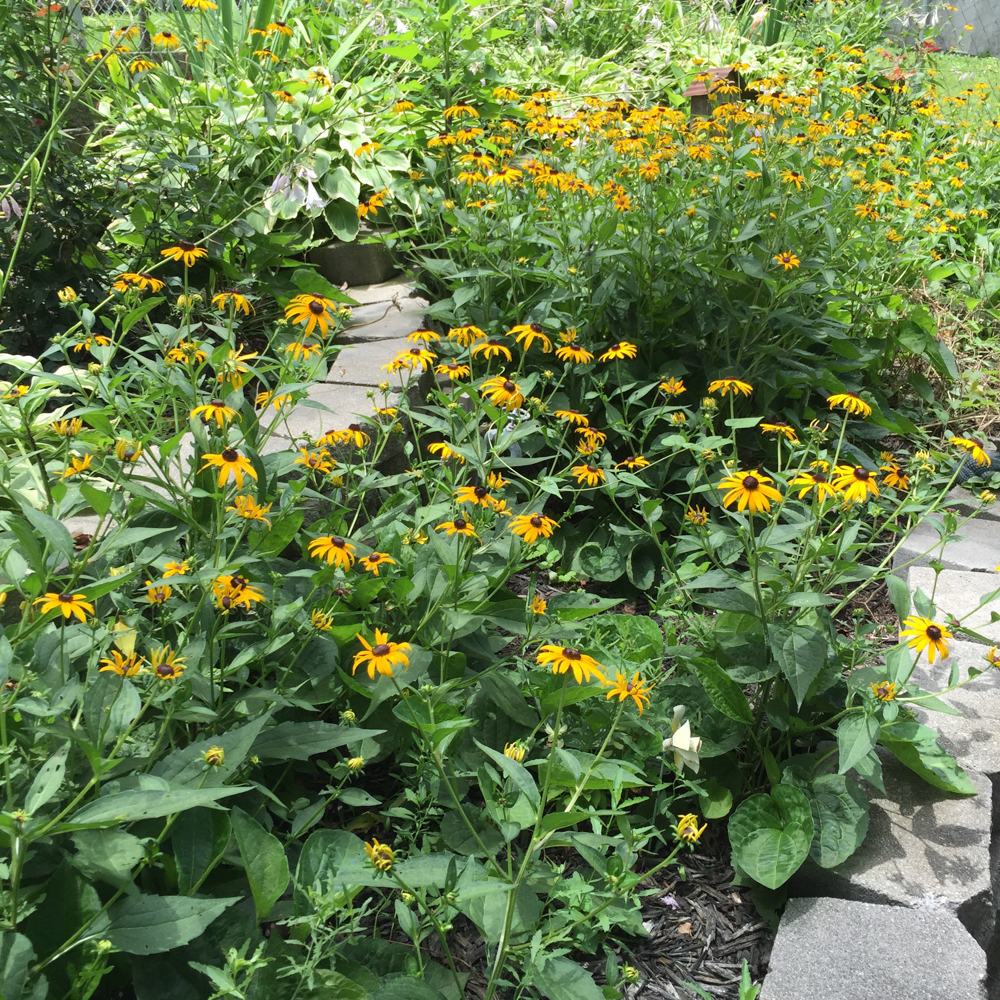
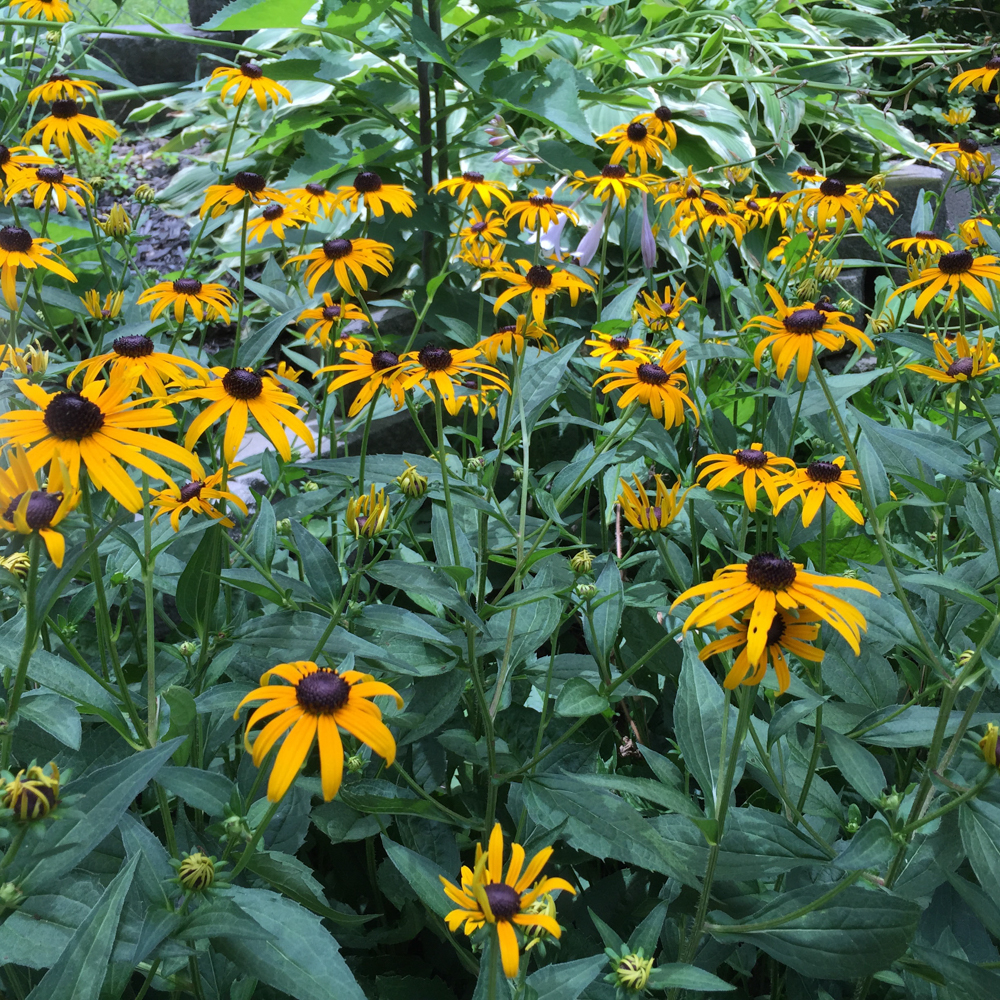
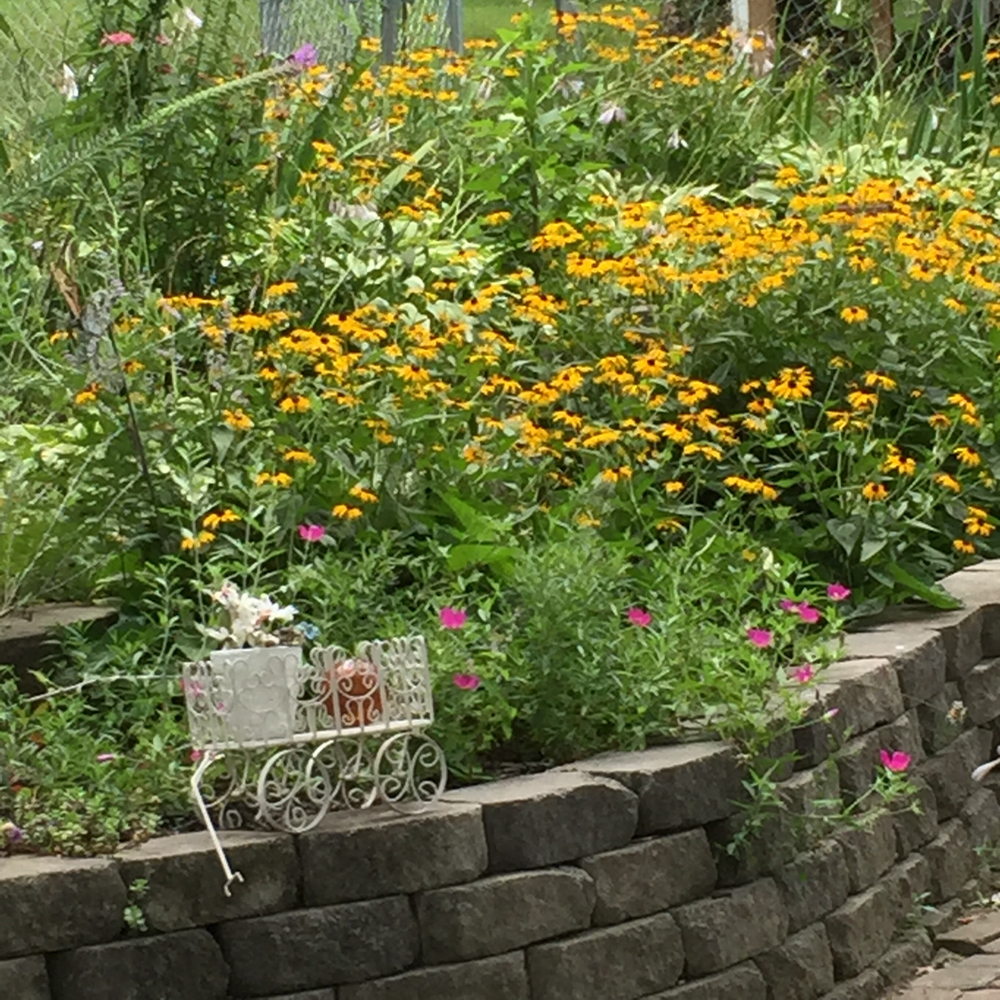
Oh no! They have taken over!
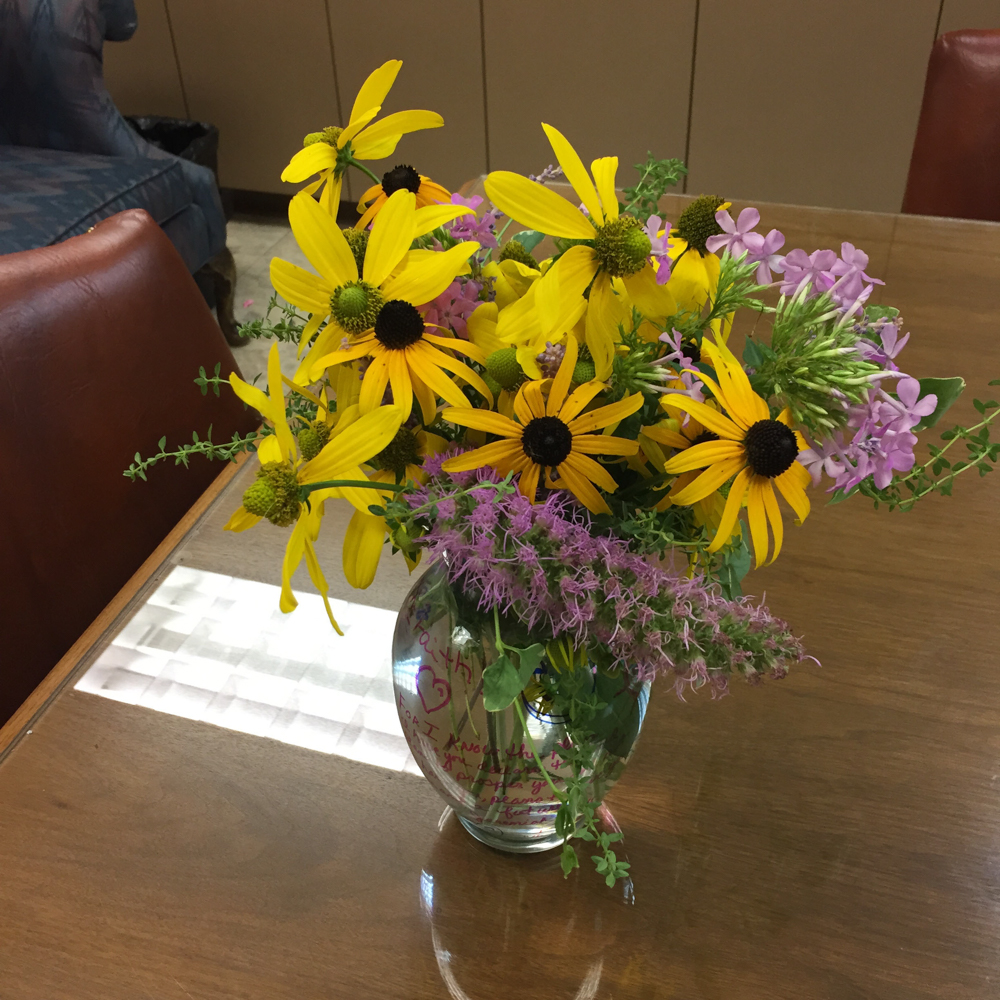
Someone gave me a vase of flowers from my yard! My hubby used to pick me flowers from the yard and bring me a surprise to the office. But this has writing on it and I wish I had the memory of what this was for.
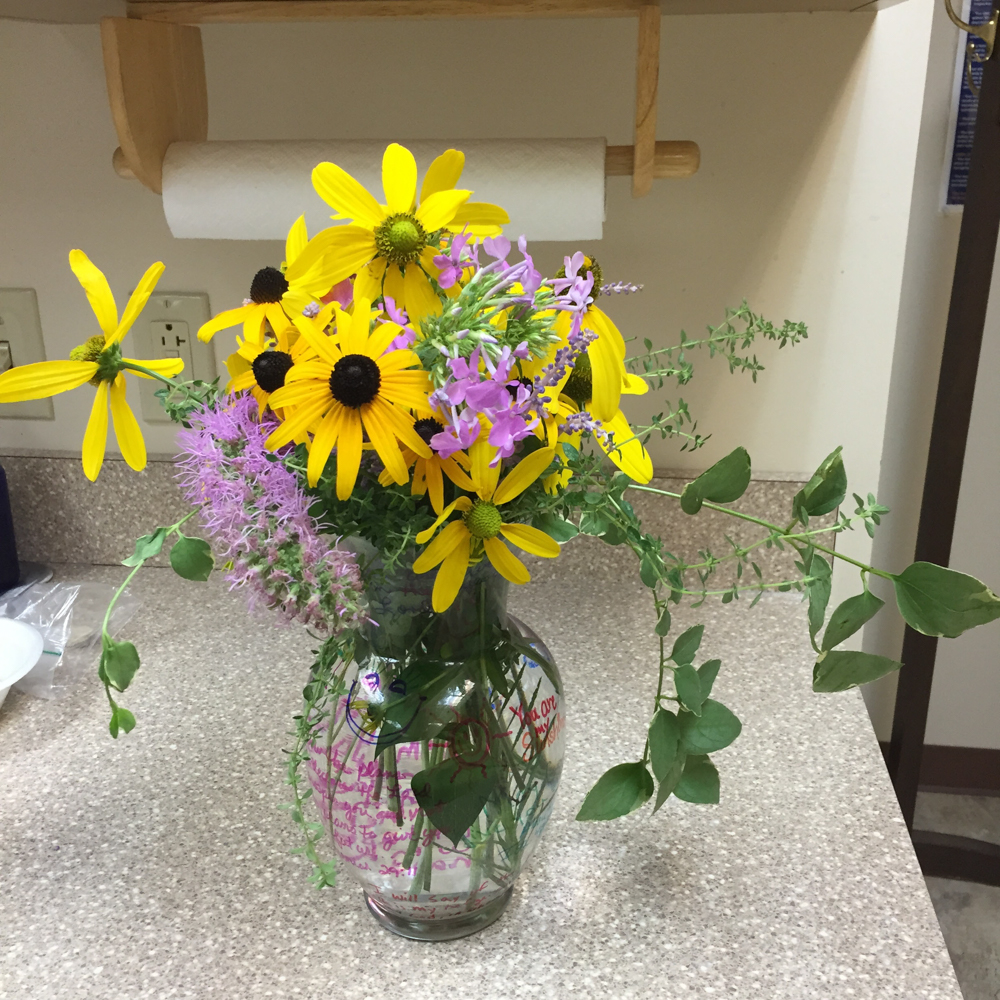
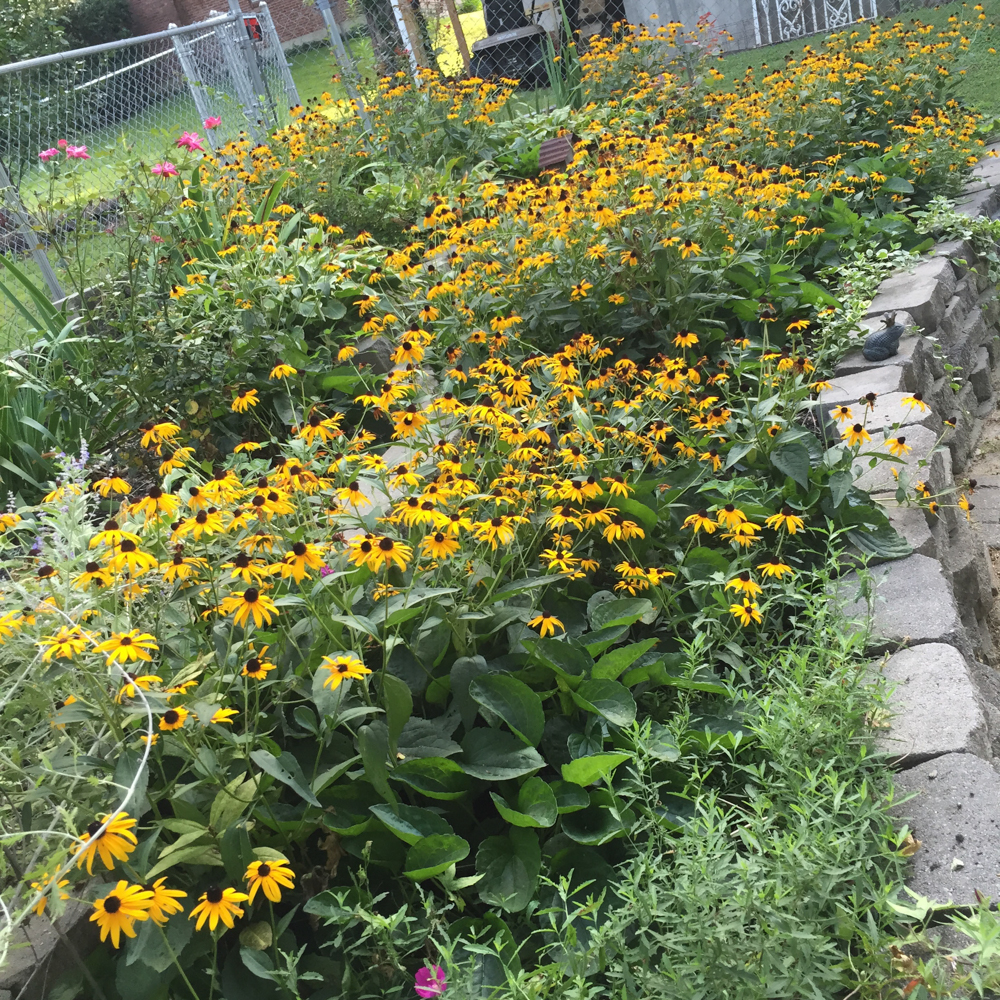
The below photos were taken in 2014.
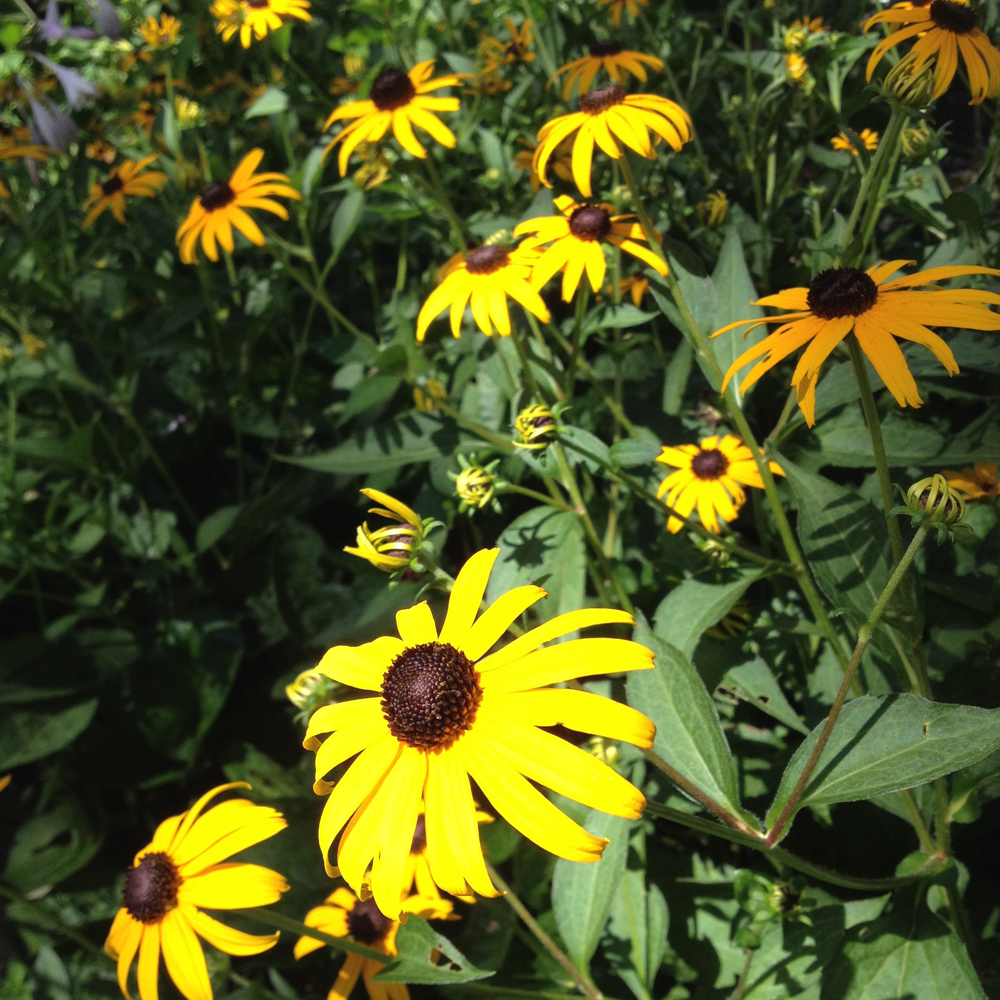
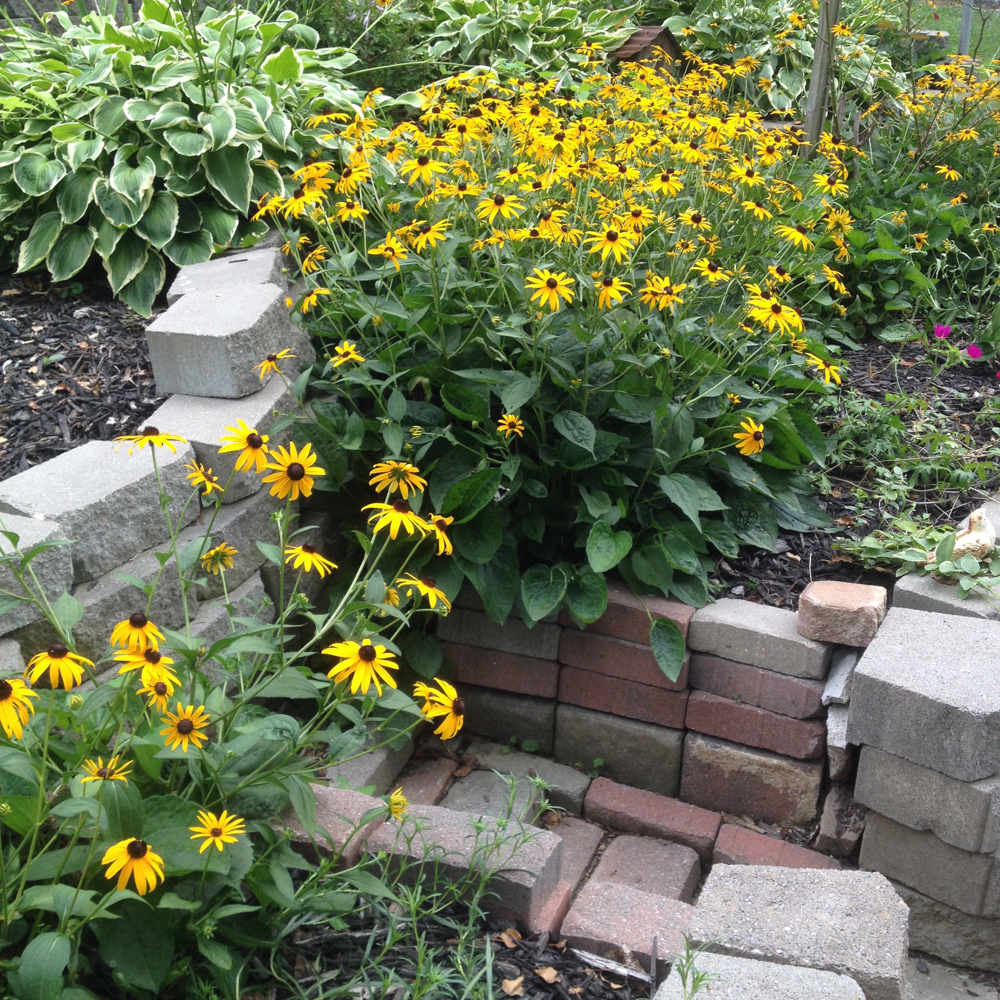
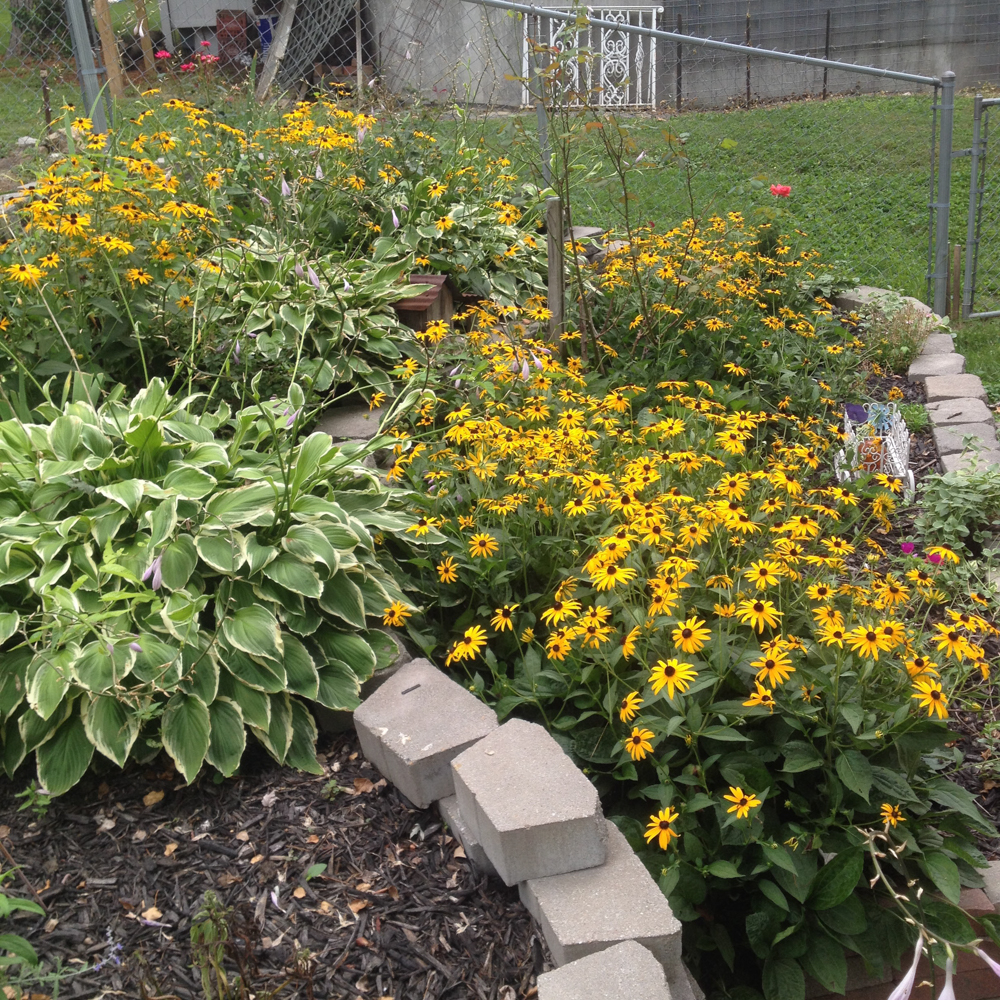
The below photos were taken in 2013.
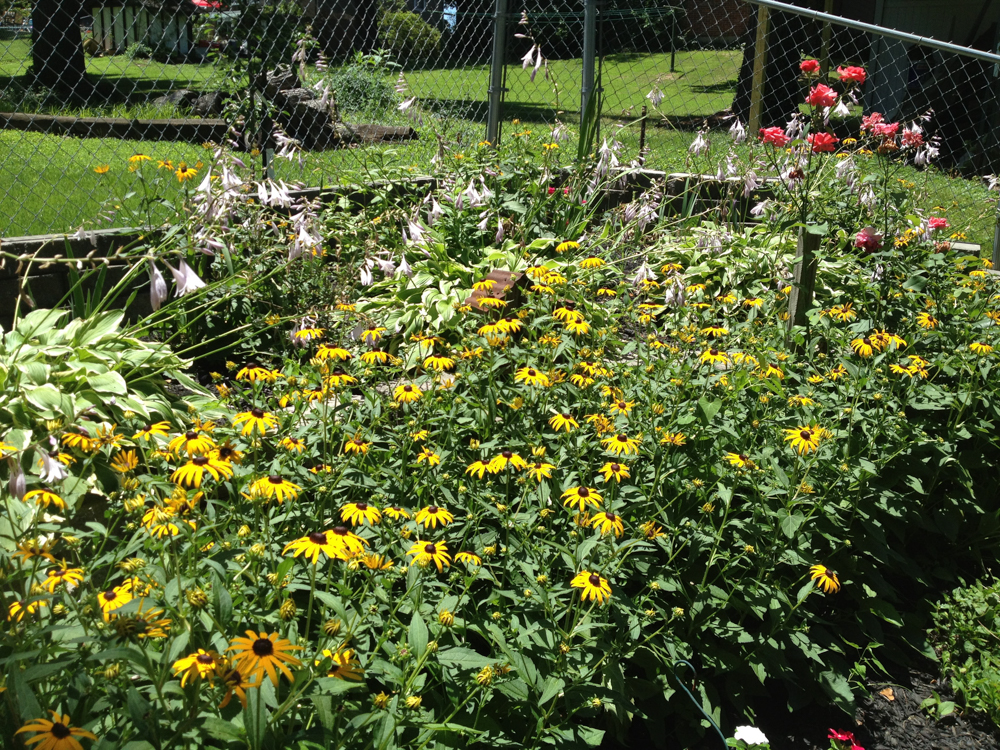
The below photos were taken in 2012.
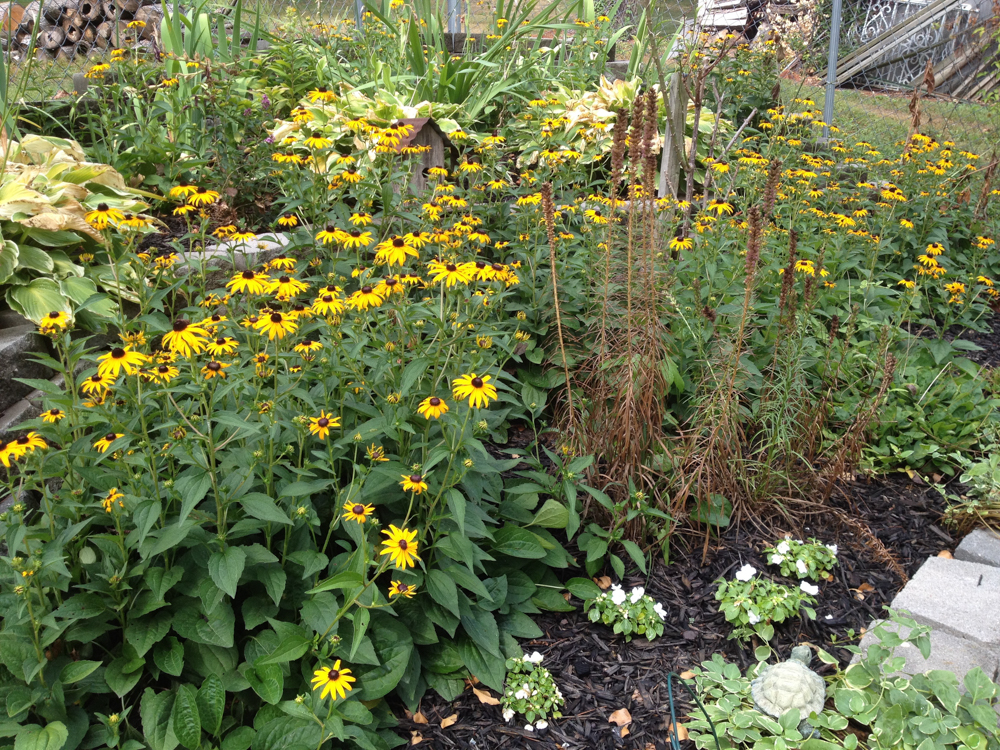
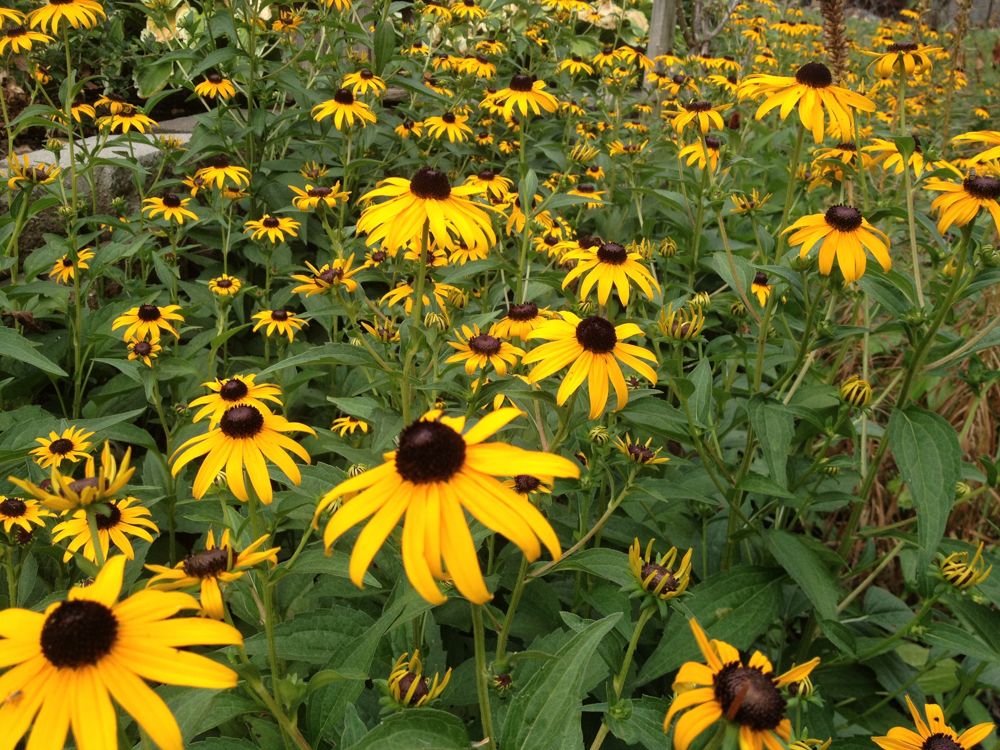
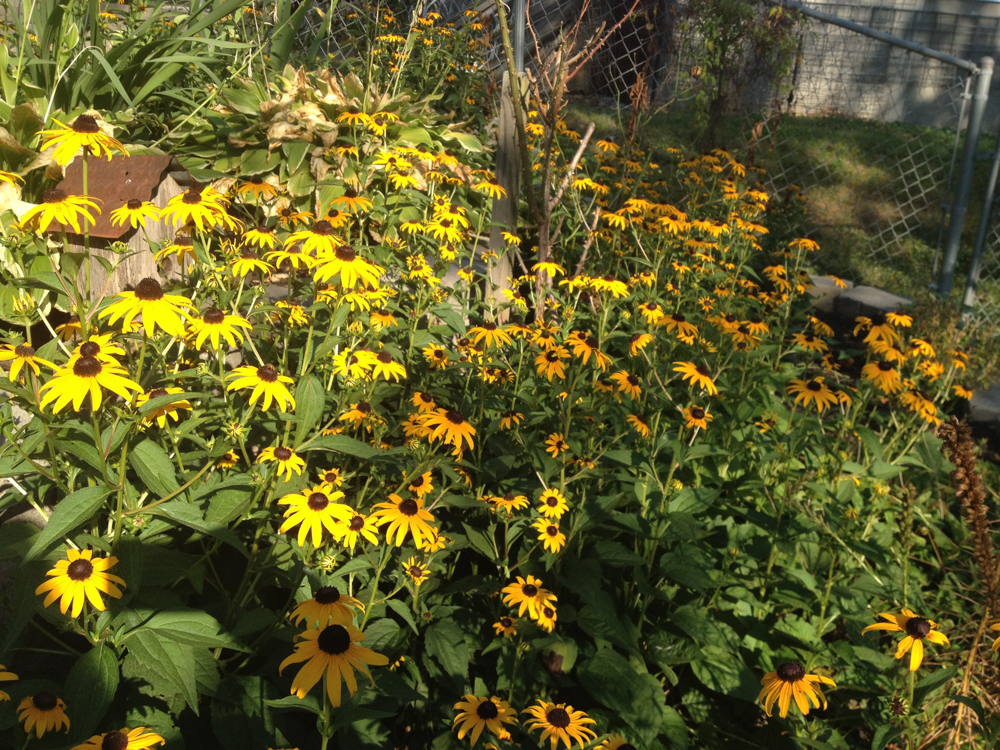
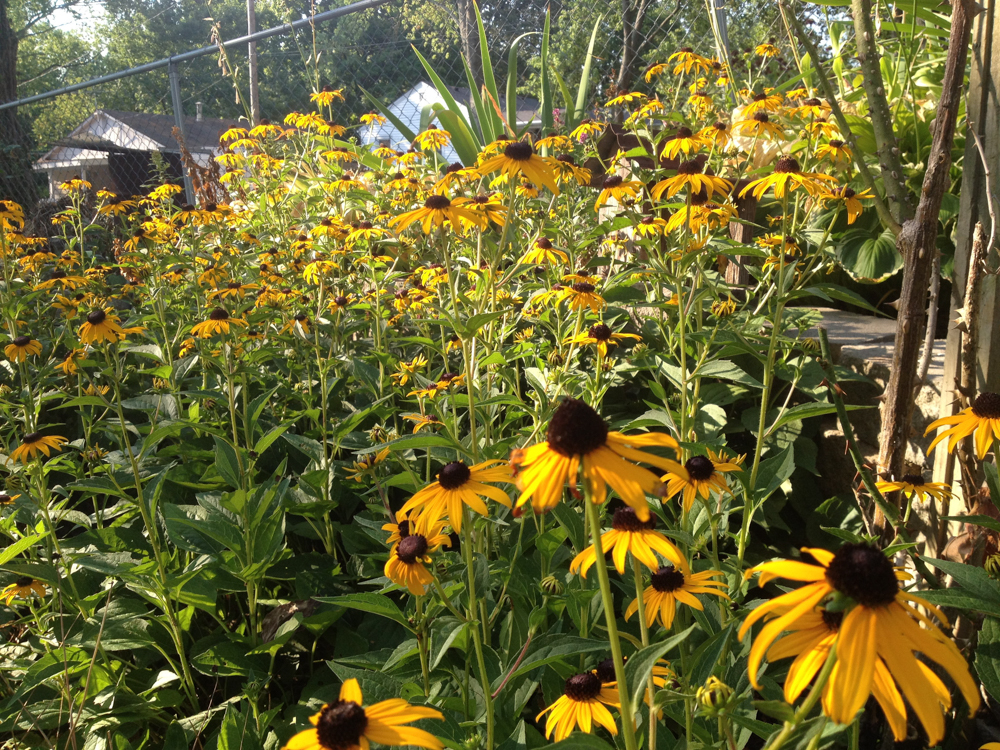
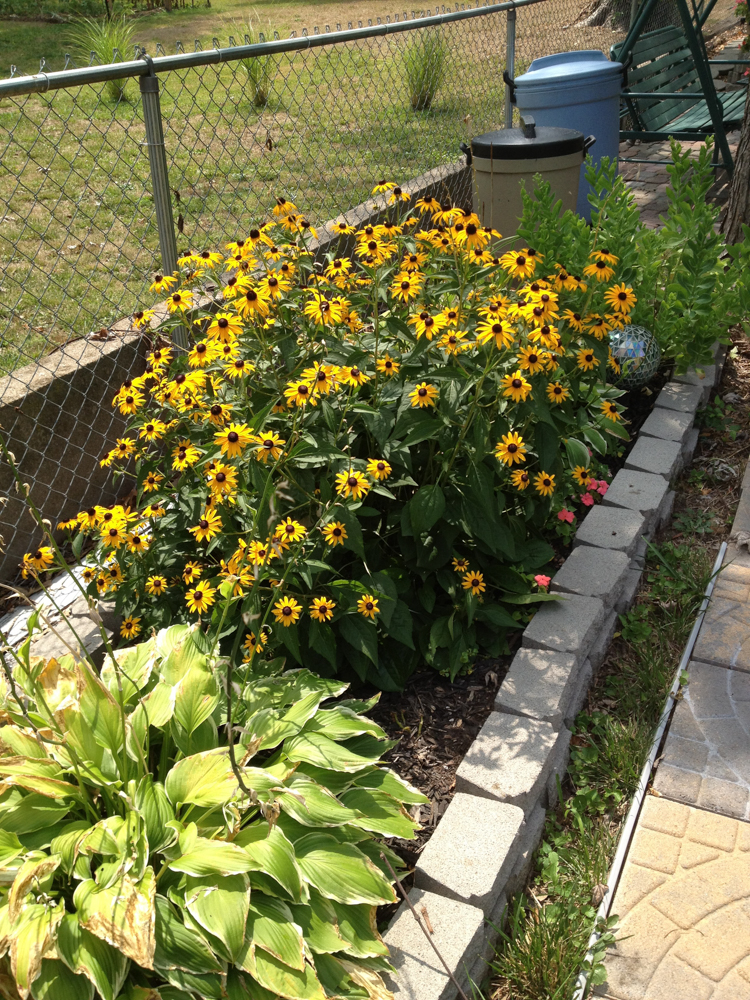
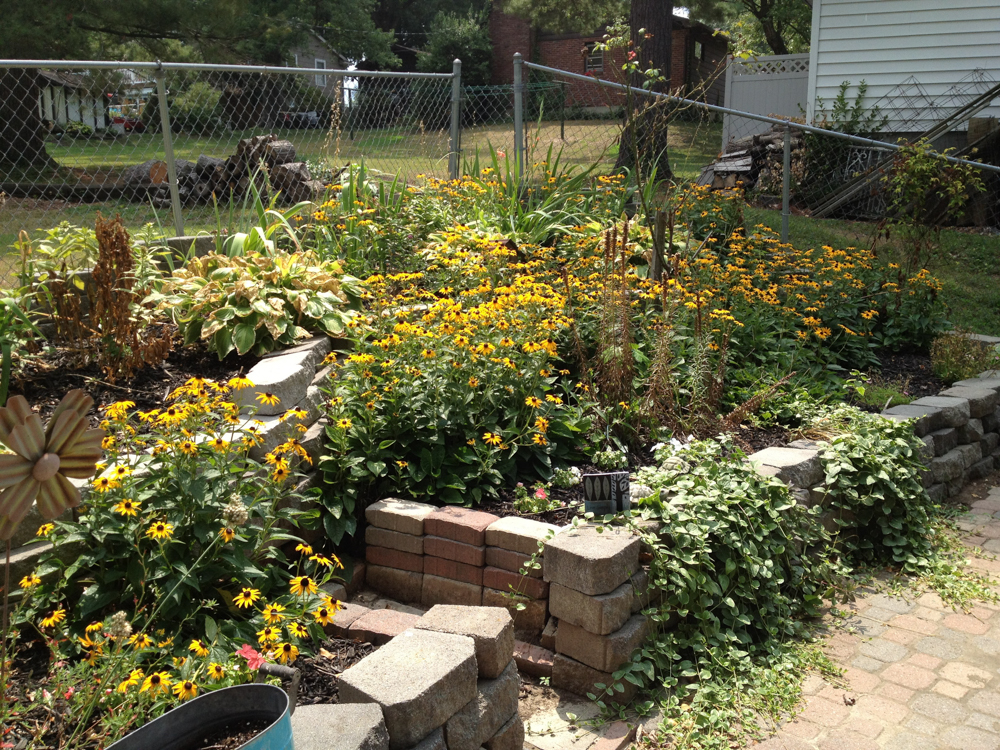
The below photos were taken in 2011.
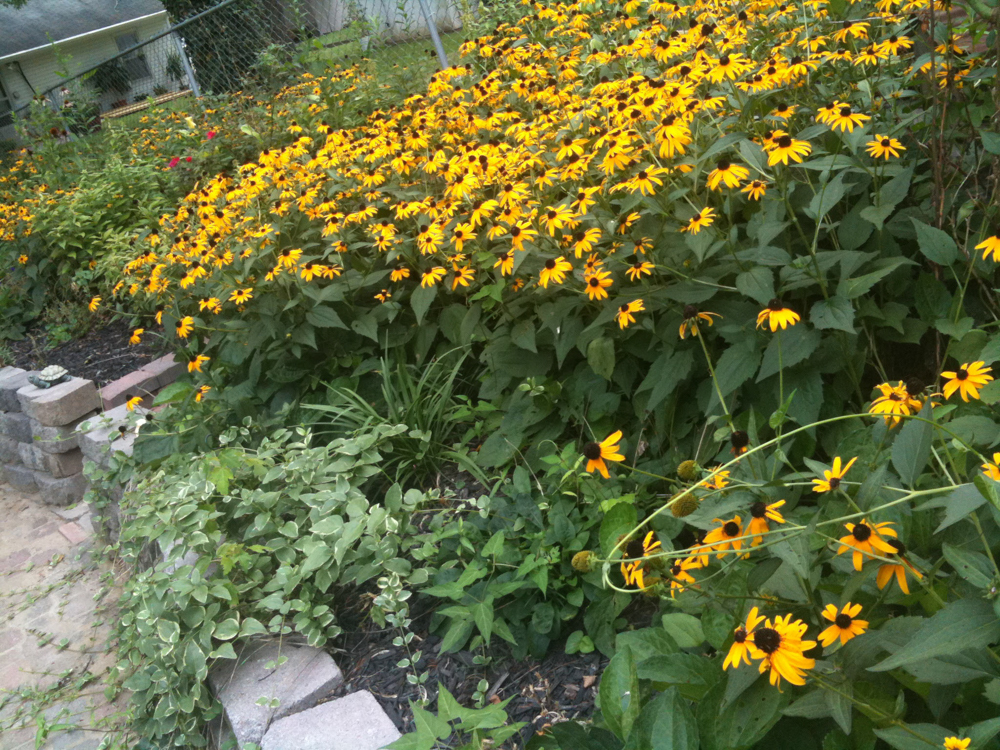
The below photos were taken in 2008.
.jpeg)
.jpeg)
The below photos were taken in 2007.
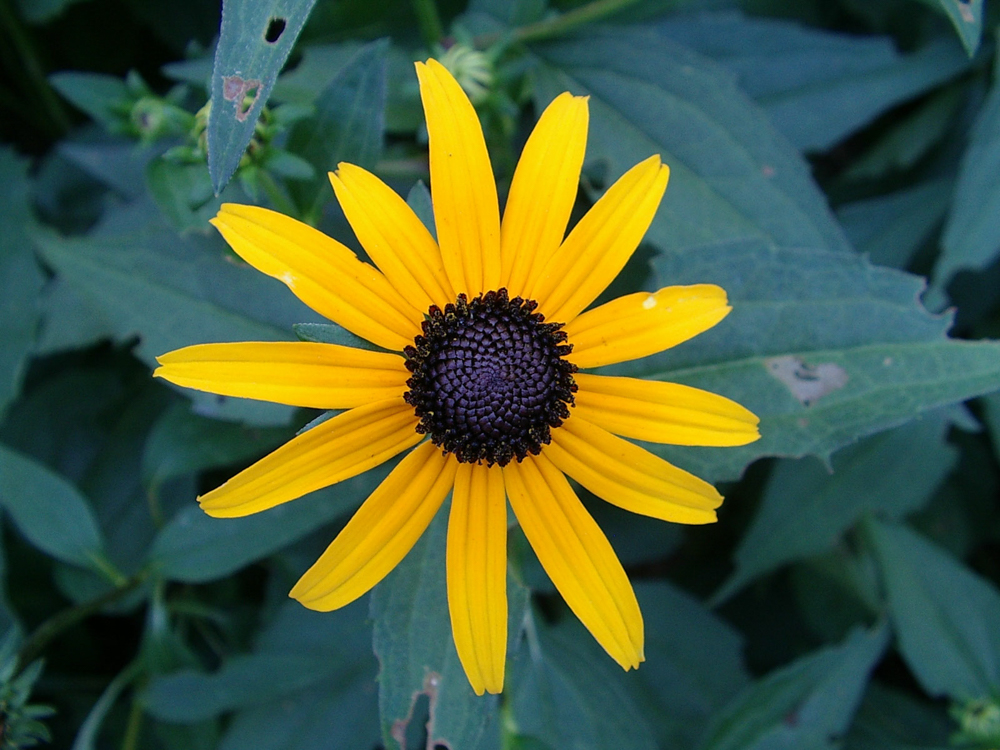
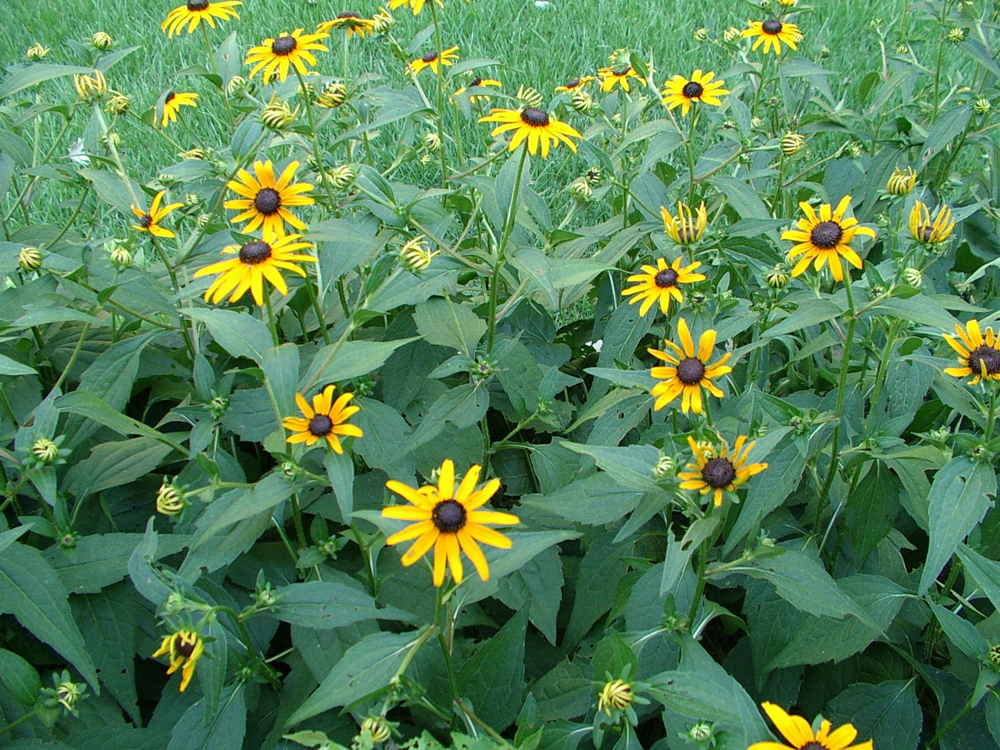
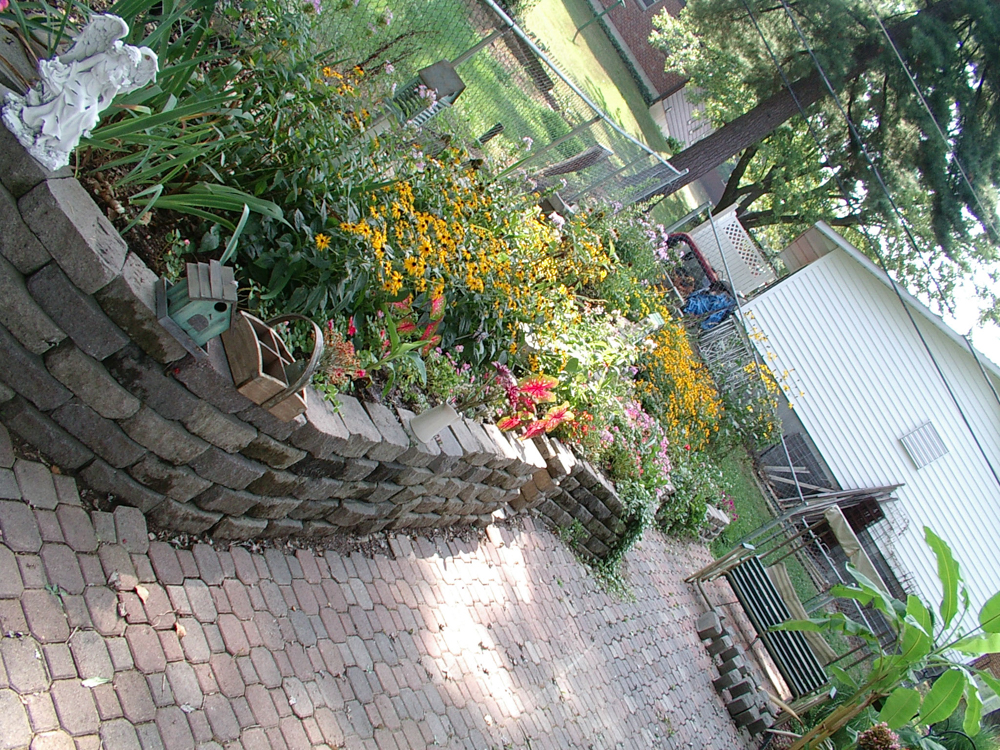
The below photos were taken in 2003.
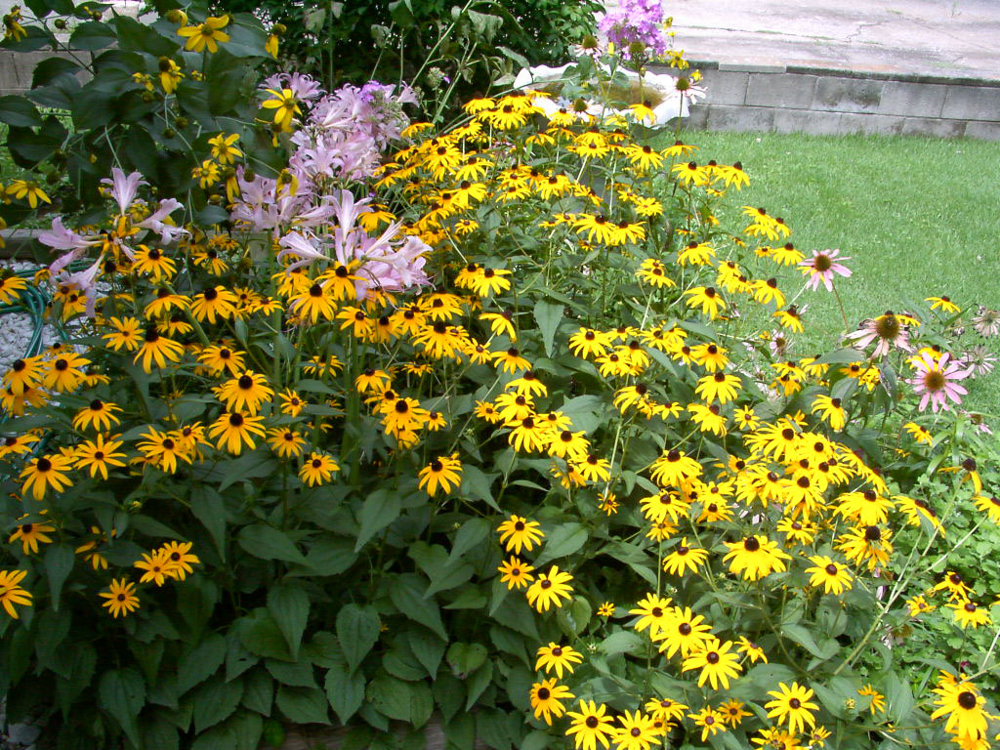
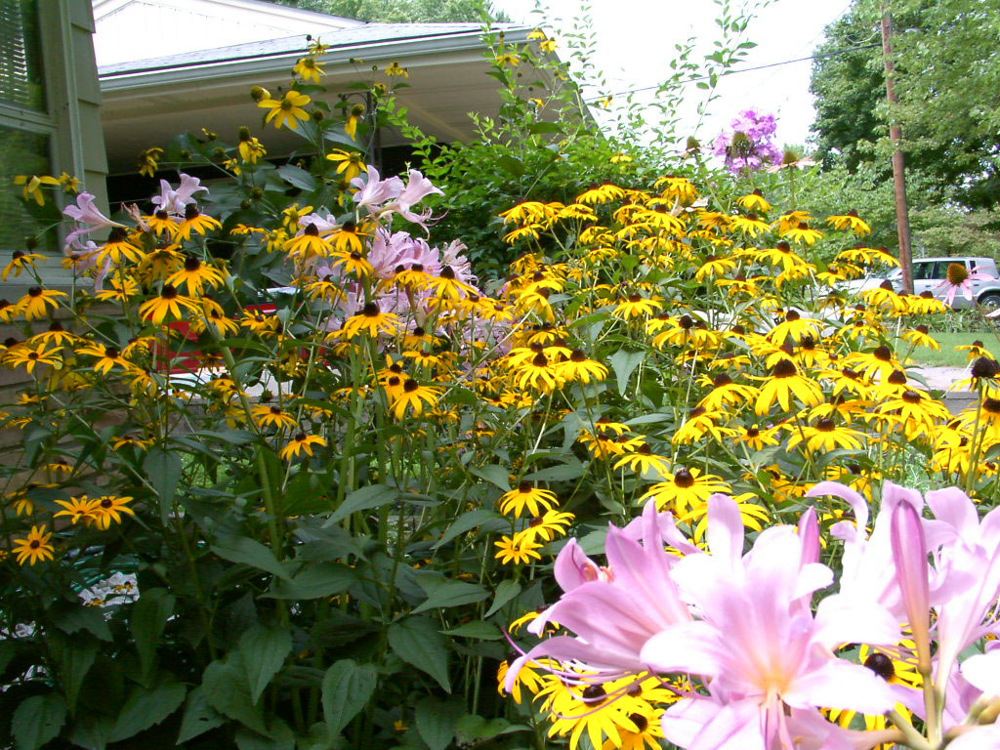
They looked great with the Lycoris Squamigera | Surprise Lily in the front yard during these years.
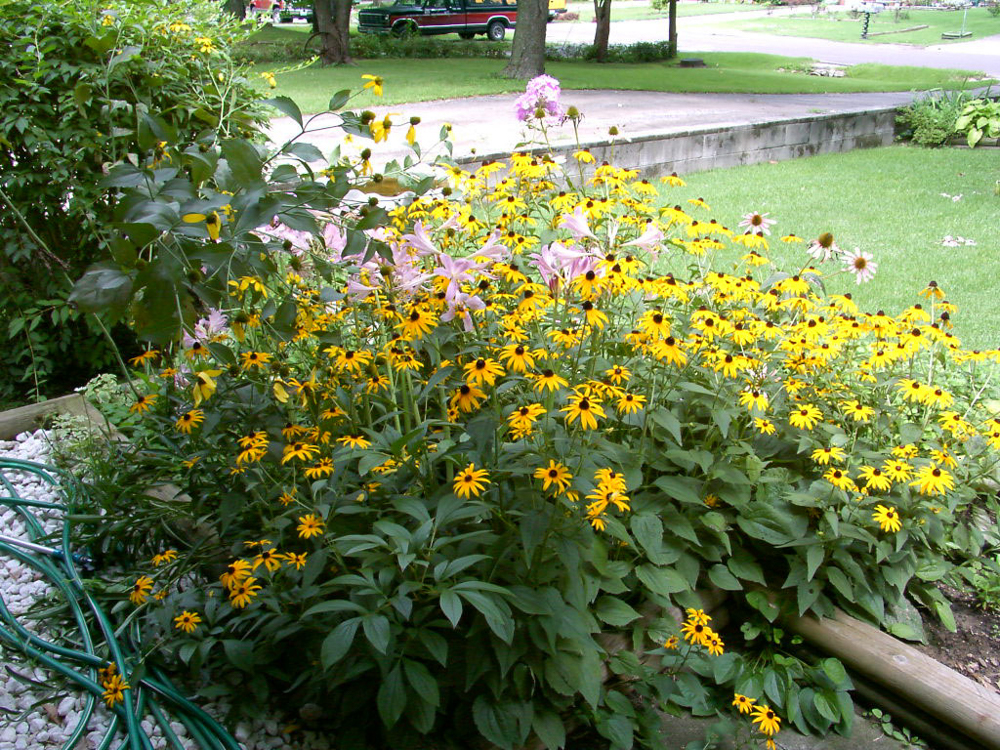
.jpeg)
.jpeg)
The below photos were taken in 2002.
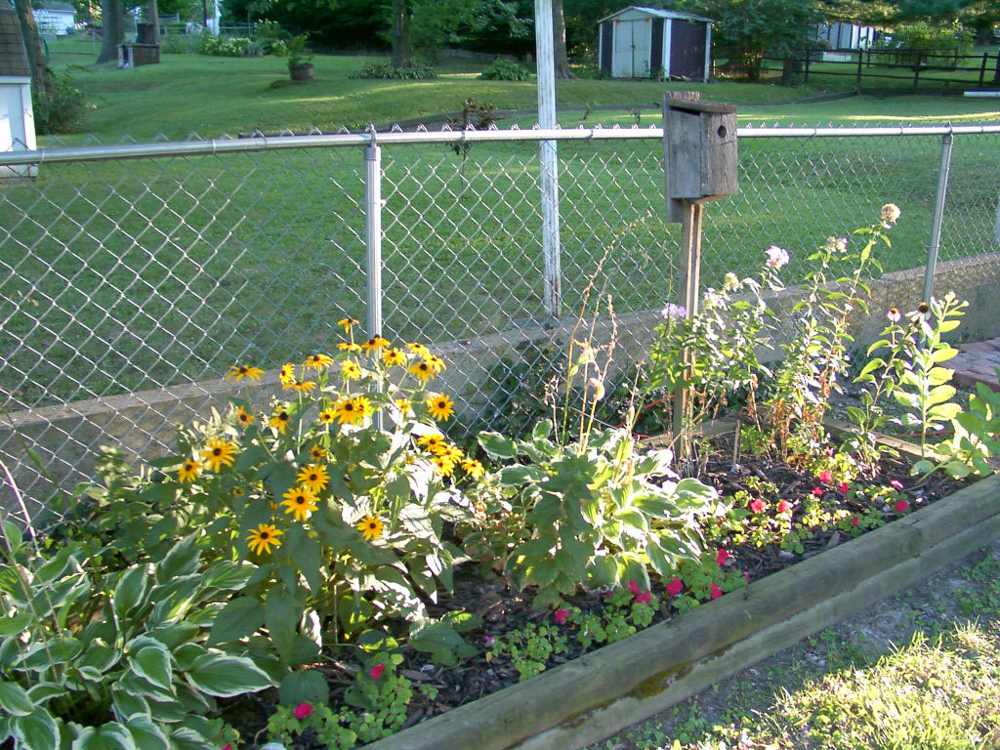
The below photos were taken in 2001.
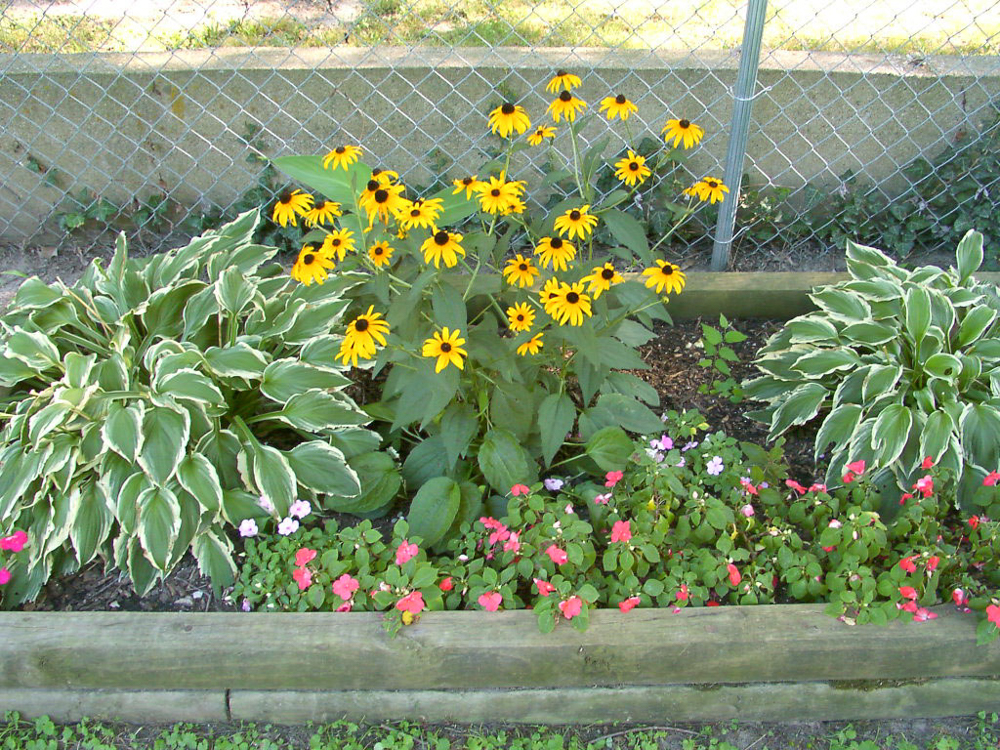
.jpeg)
We still have that birdhouse! It is in the backyard now in 2023, but has been in the backyard for many years just sitting on the concrete wall. That swing was from my parent's home where I grew up and I kept it for many years, but eventually parted with it about 2020.
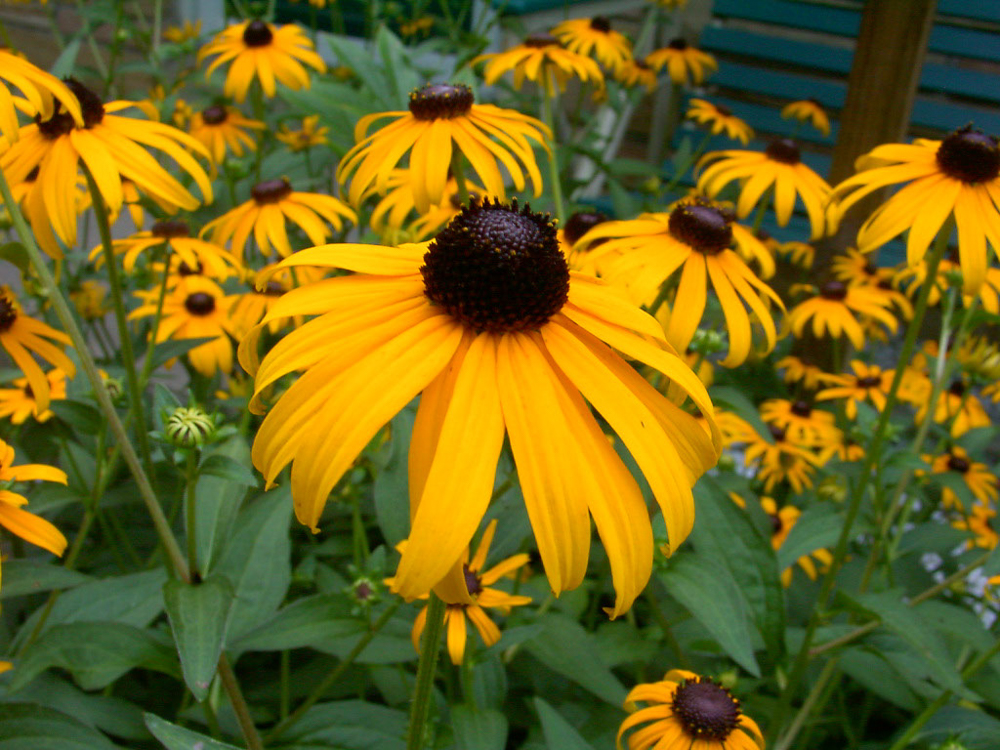
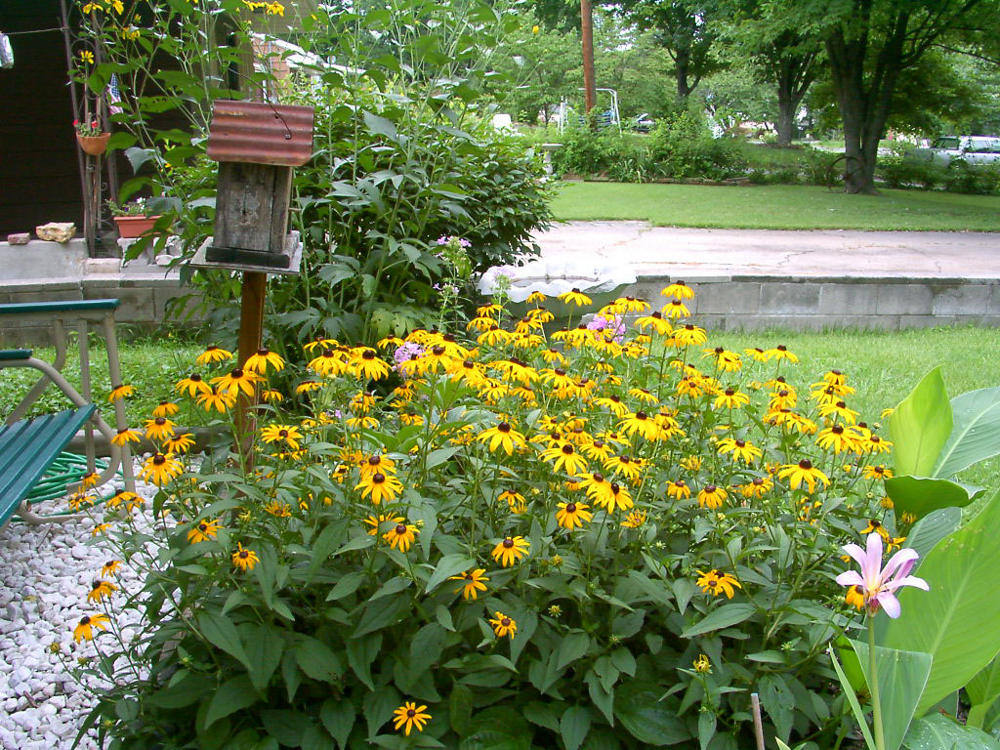
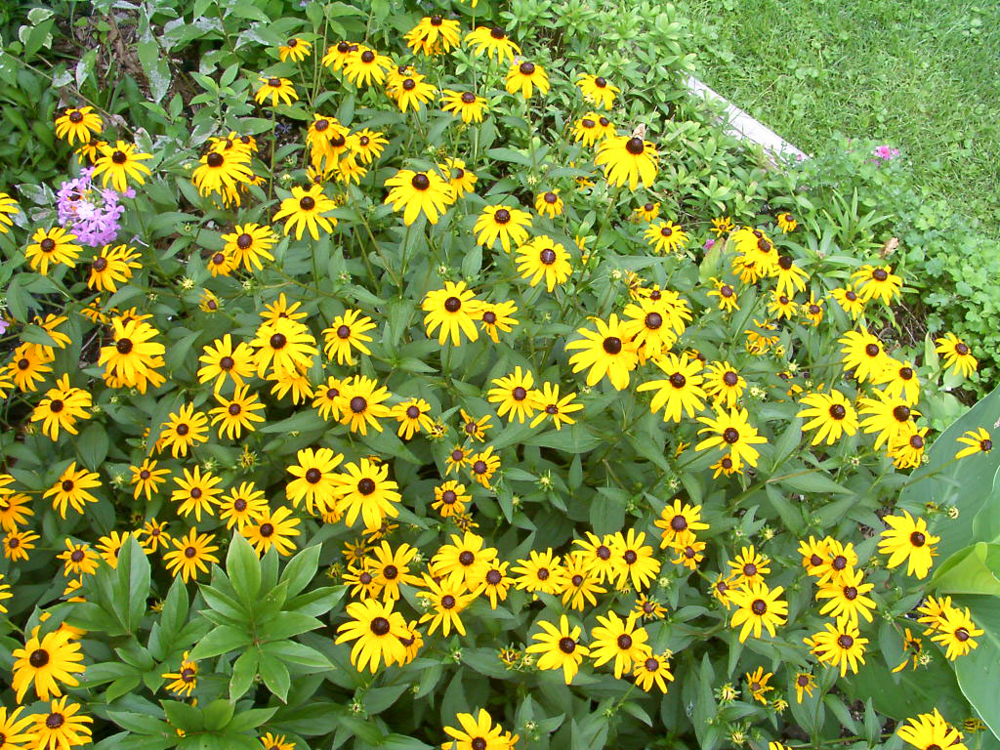
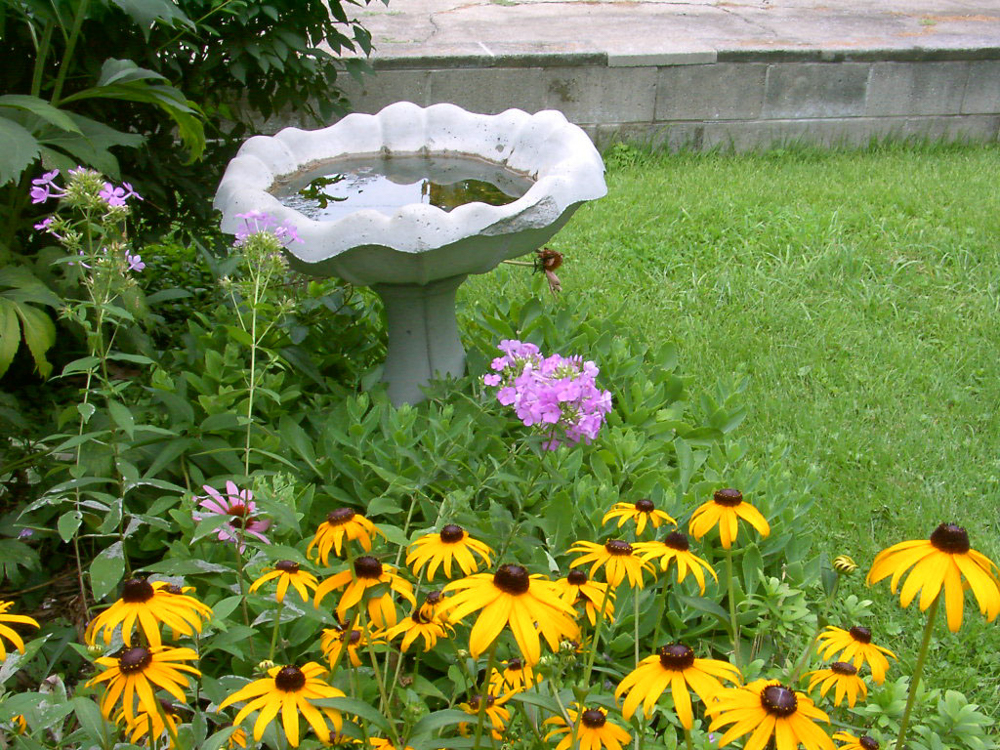
That concrete birdbath was in the yard for many years and it was SO hard to maintain and SO heavy to pick up and dump. It eventually had to go!
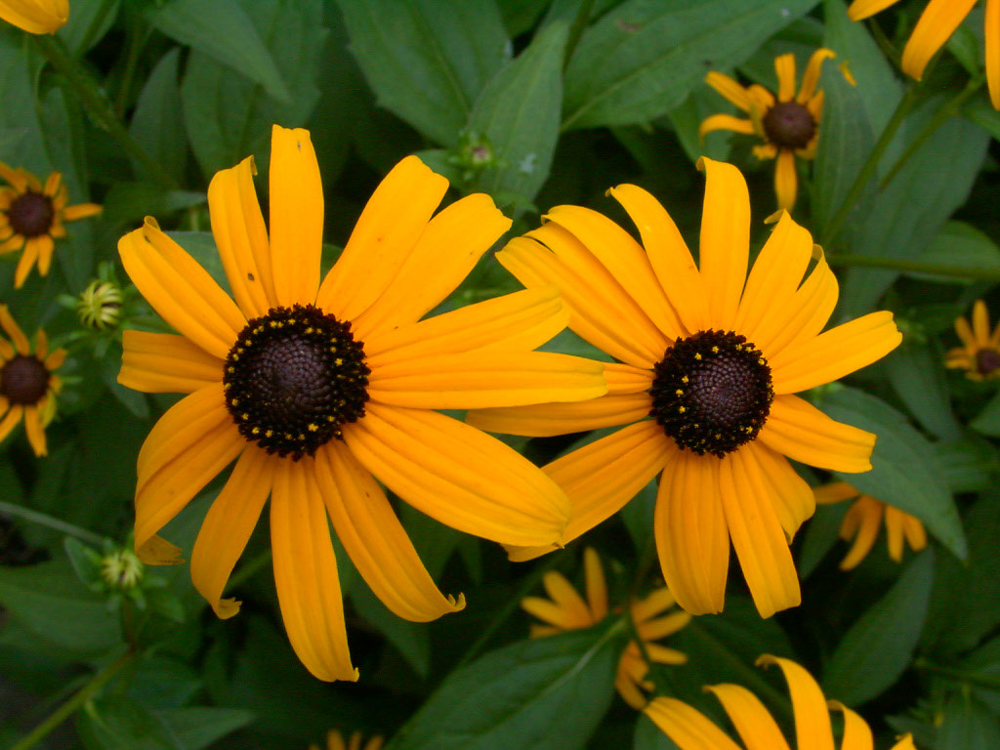
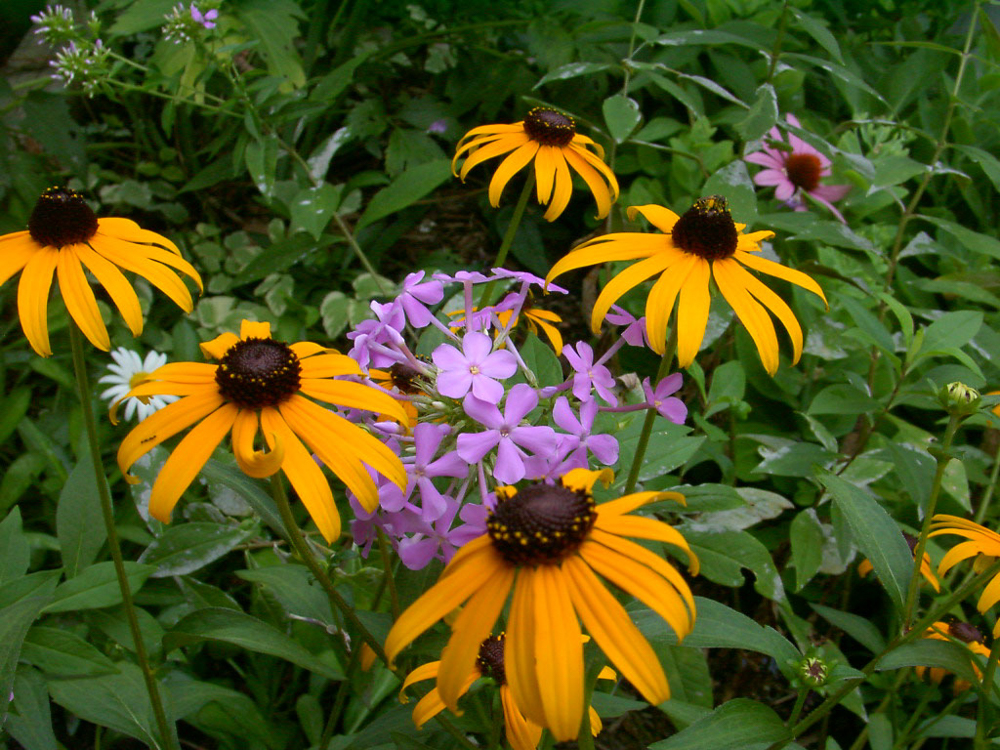
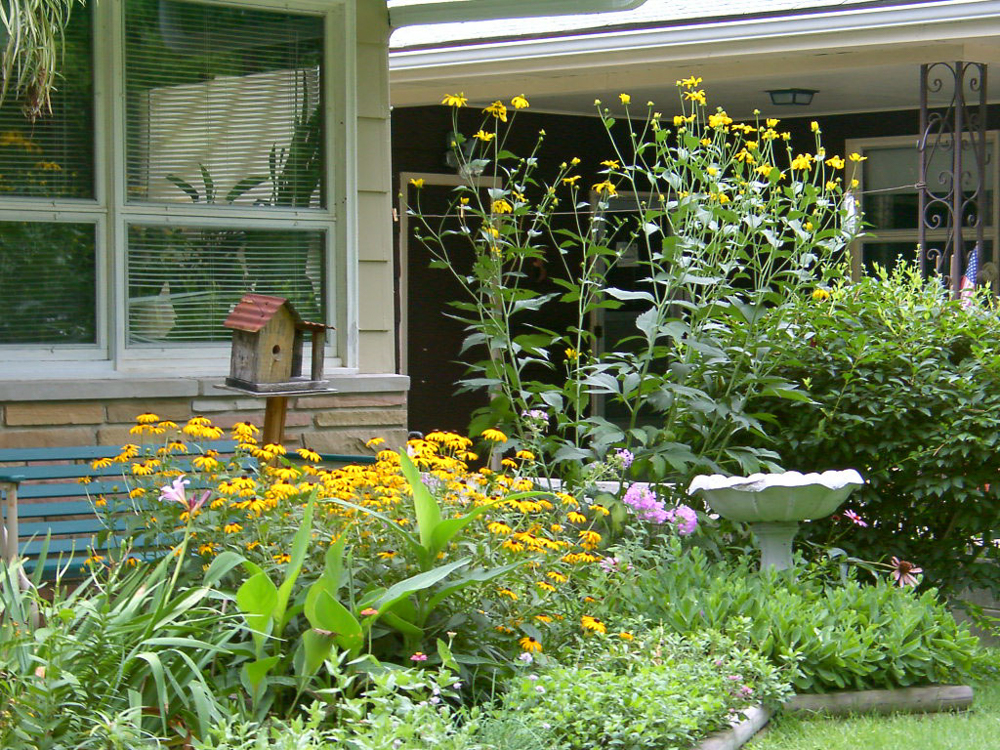
The Redbueckia Laciniata | Cut-leaf Coneflowers that is tall in the back has been in our yard a long time and is still in the same place blooming in 2023.
